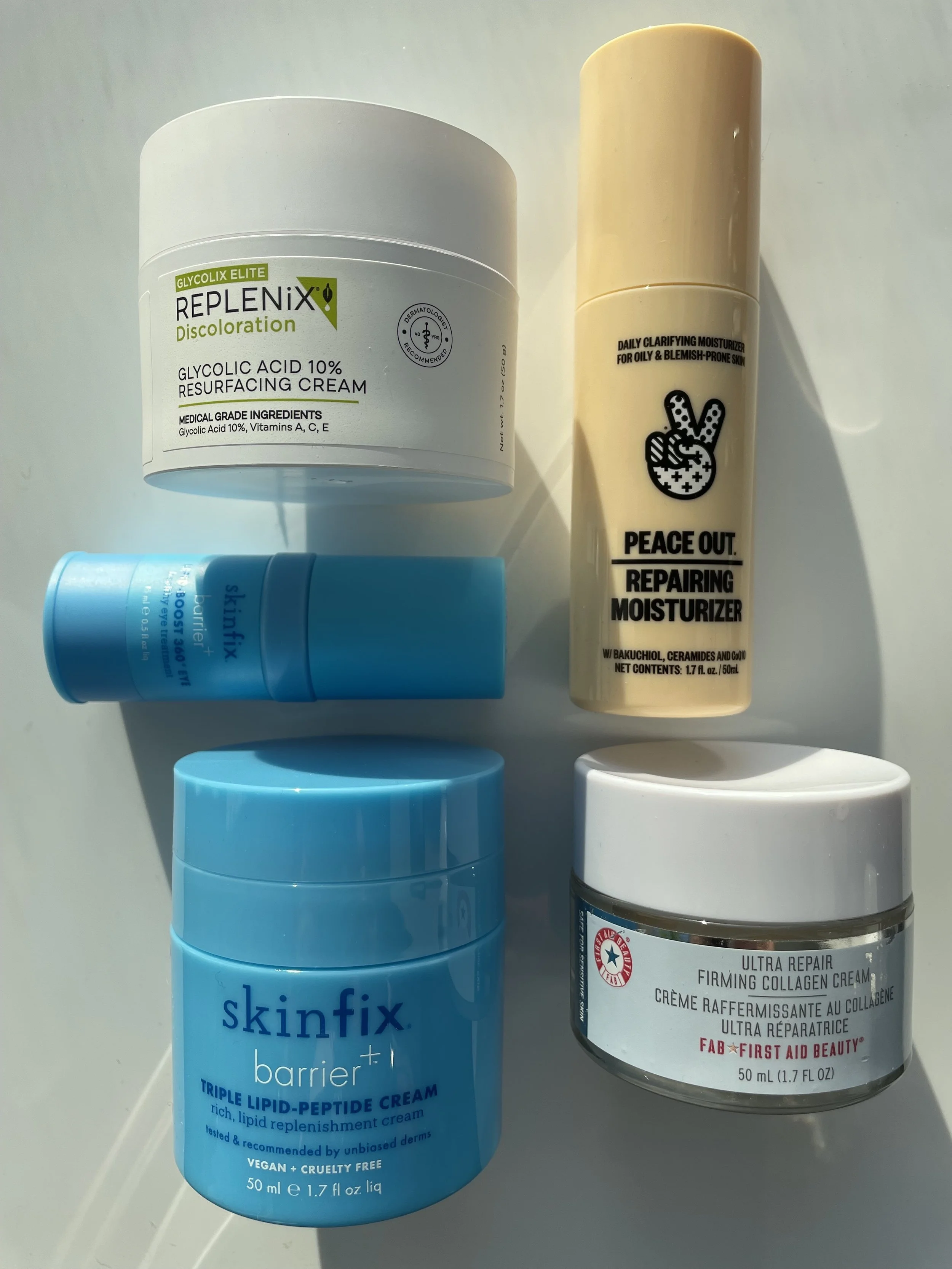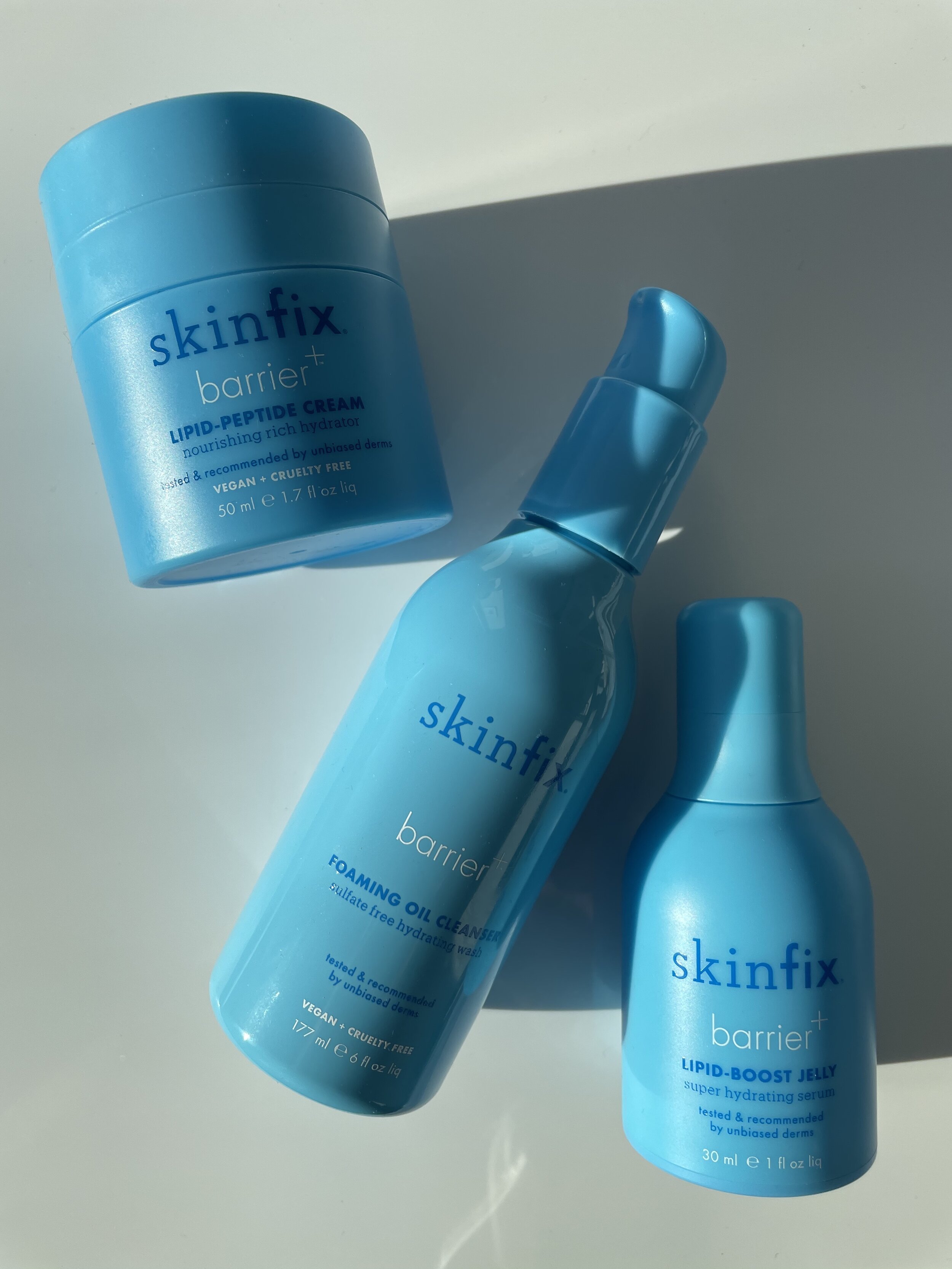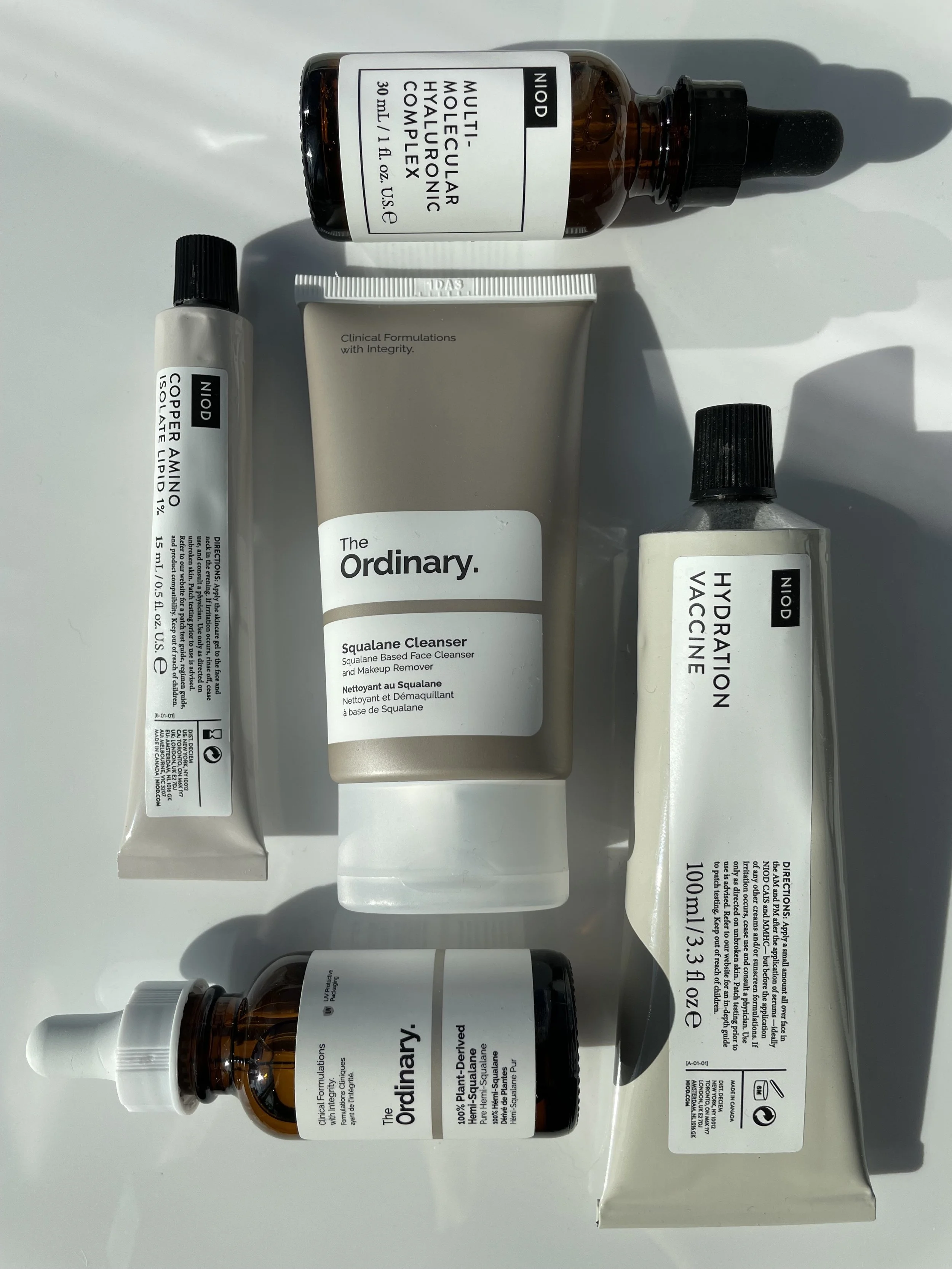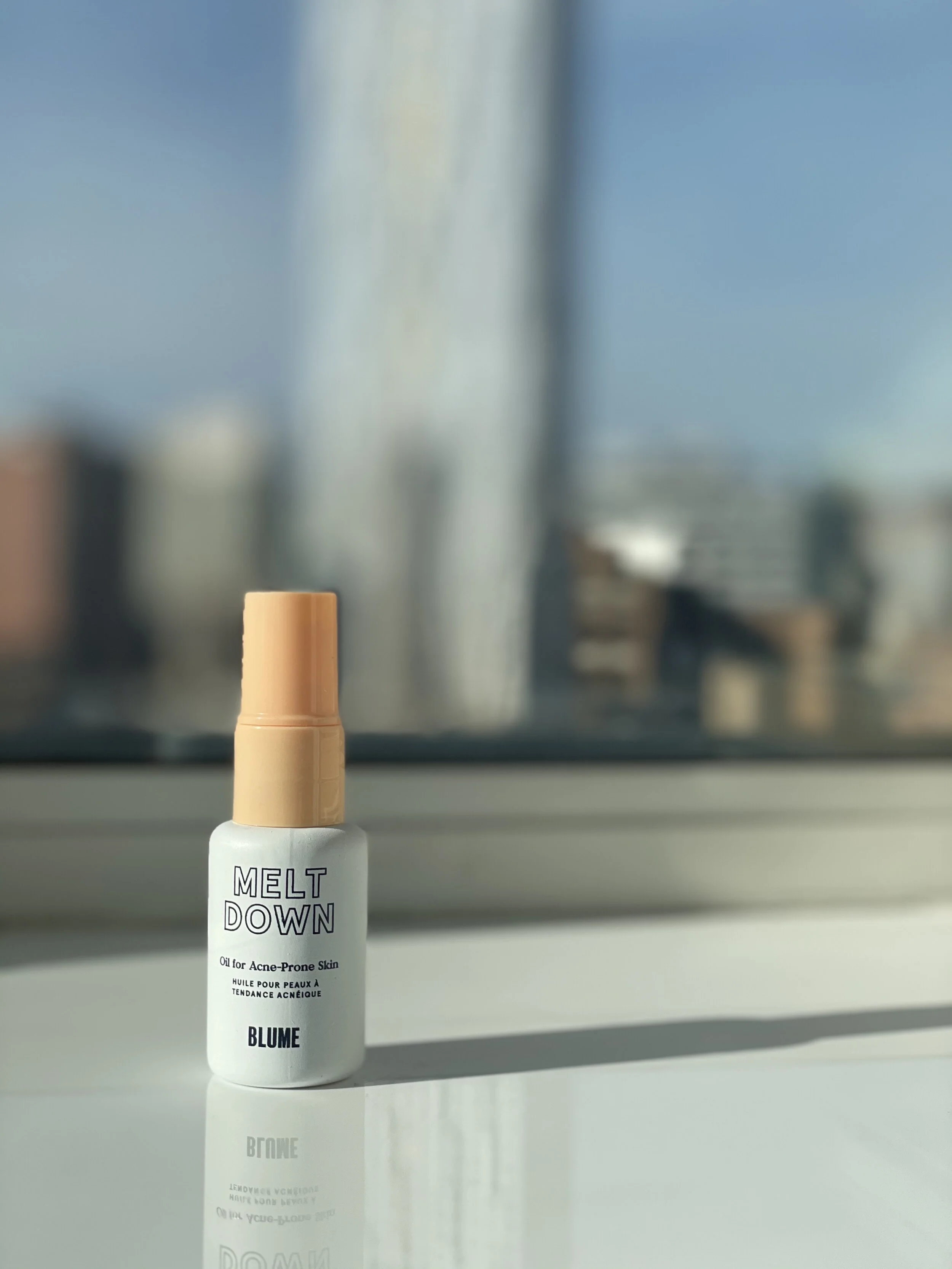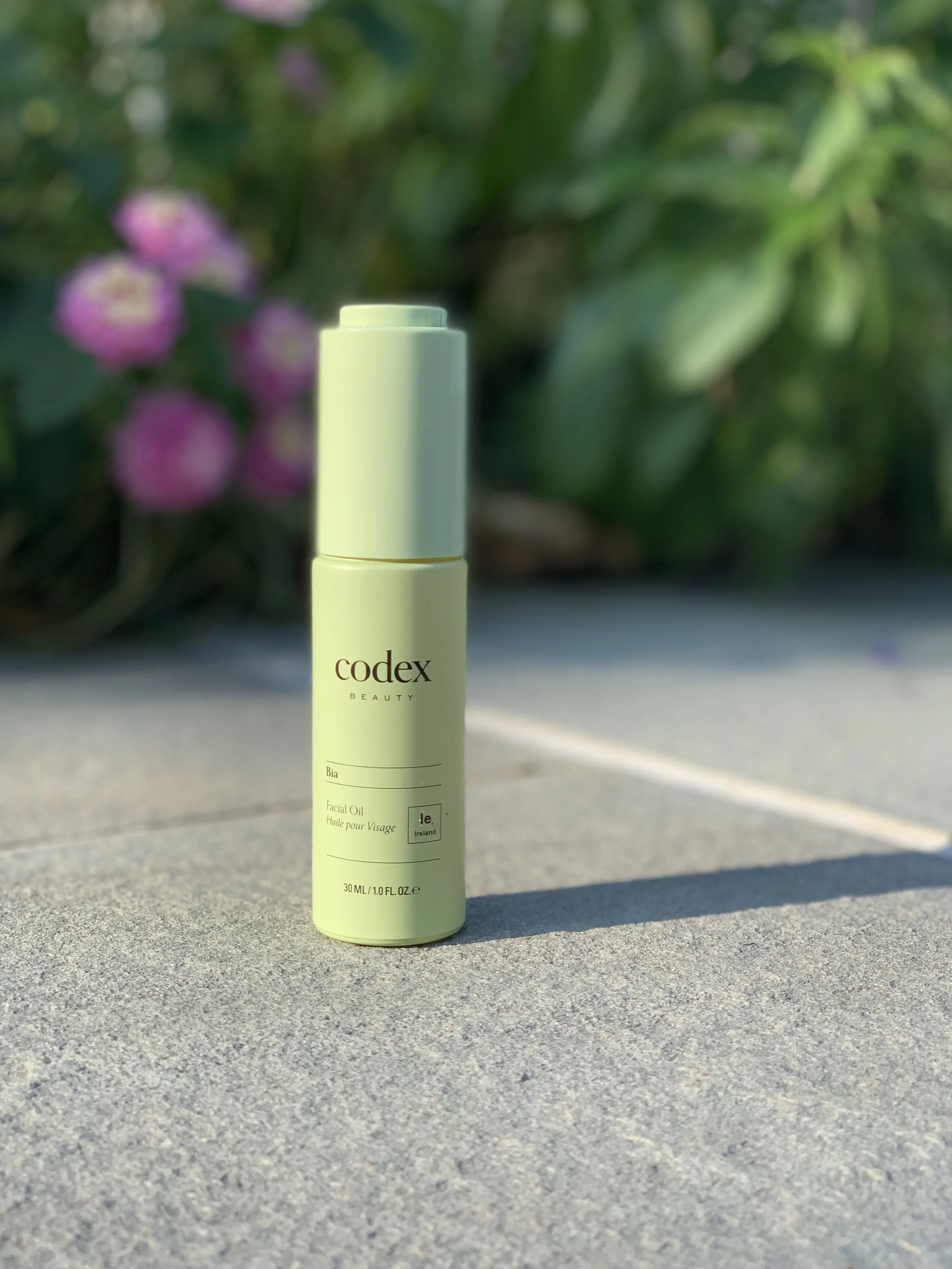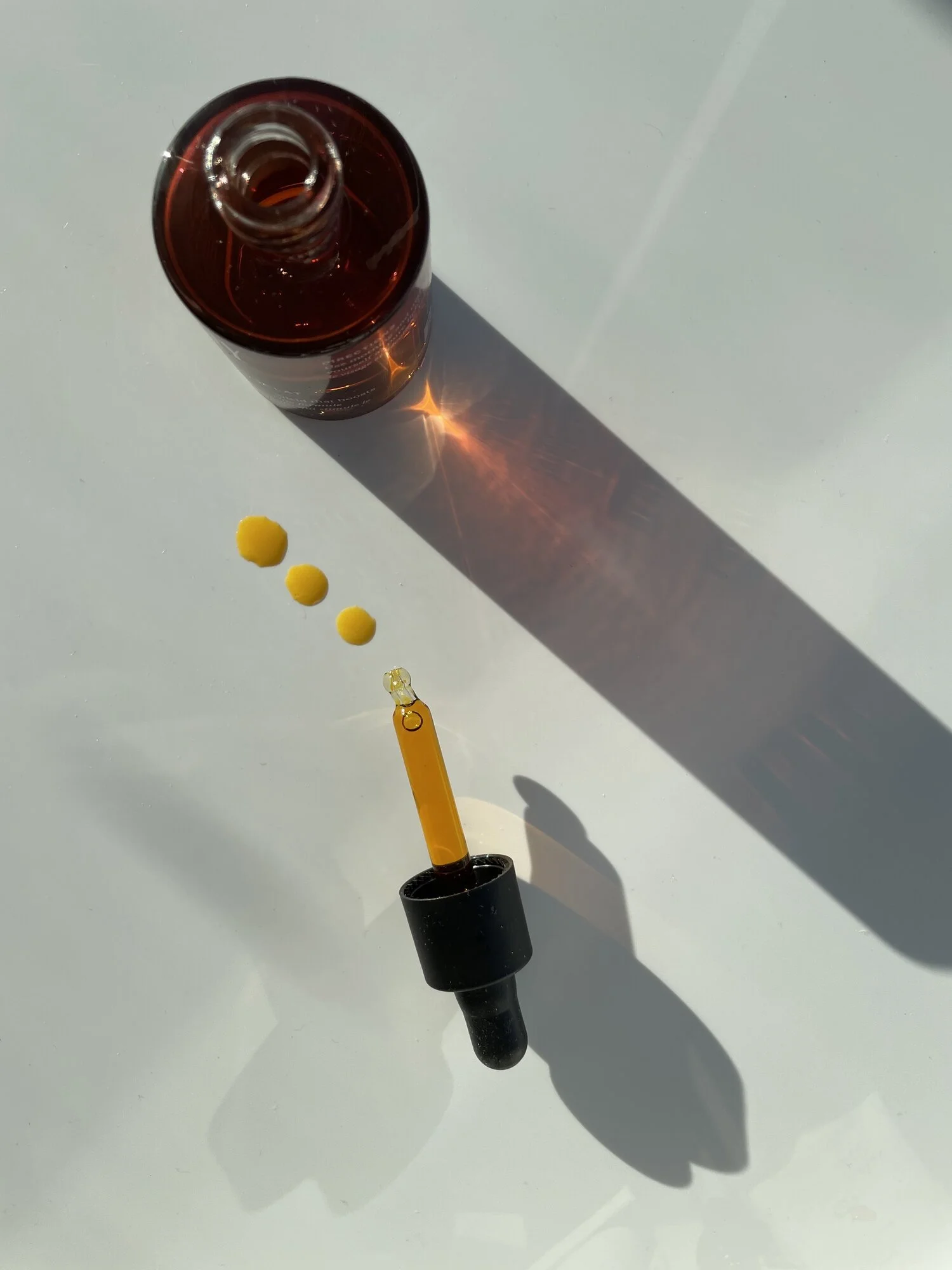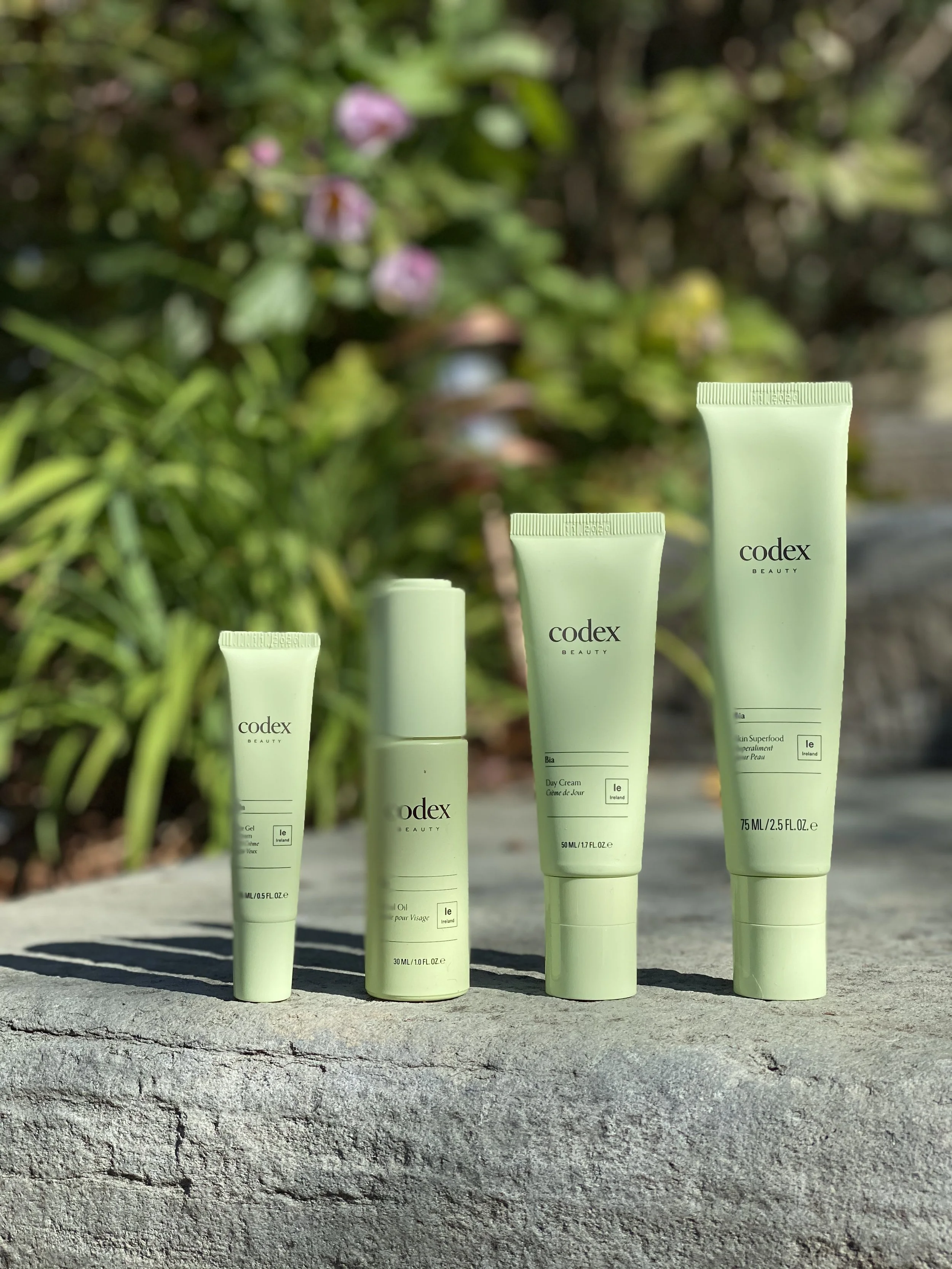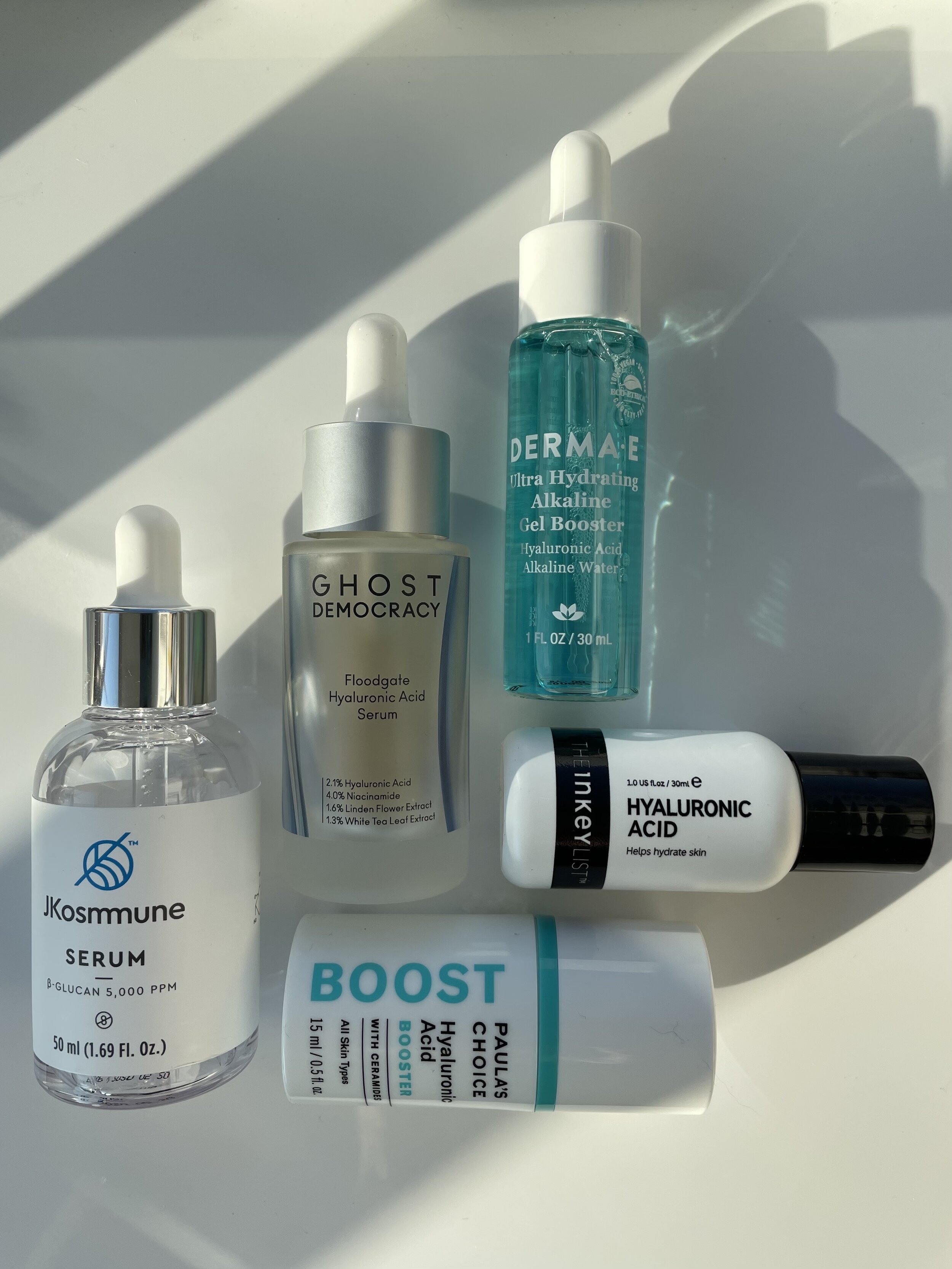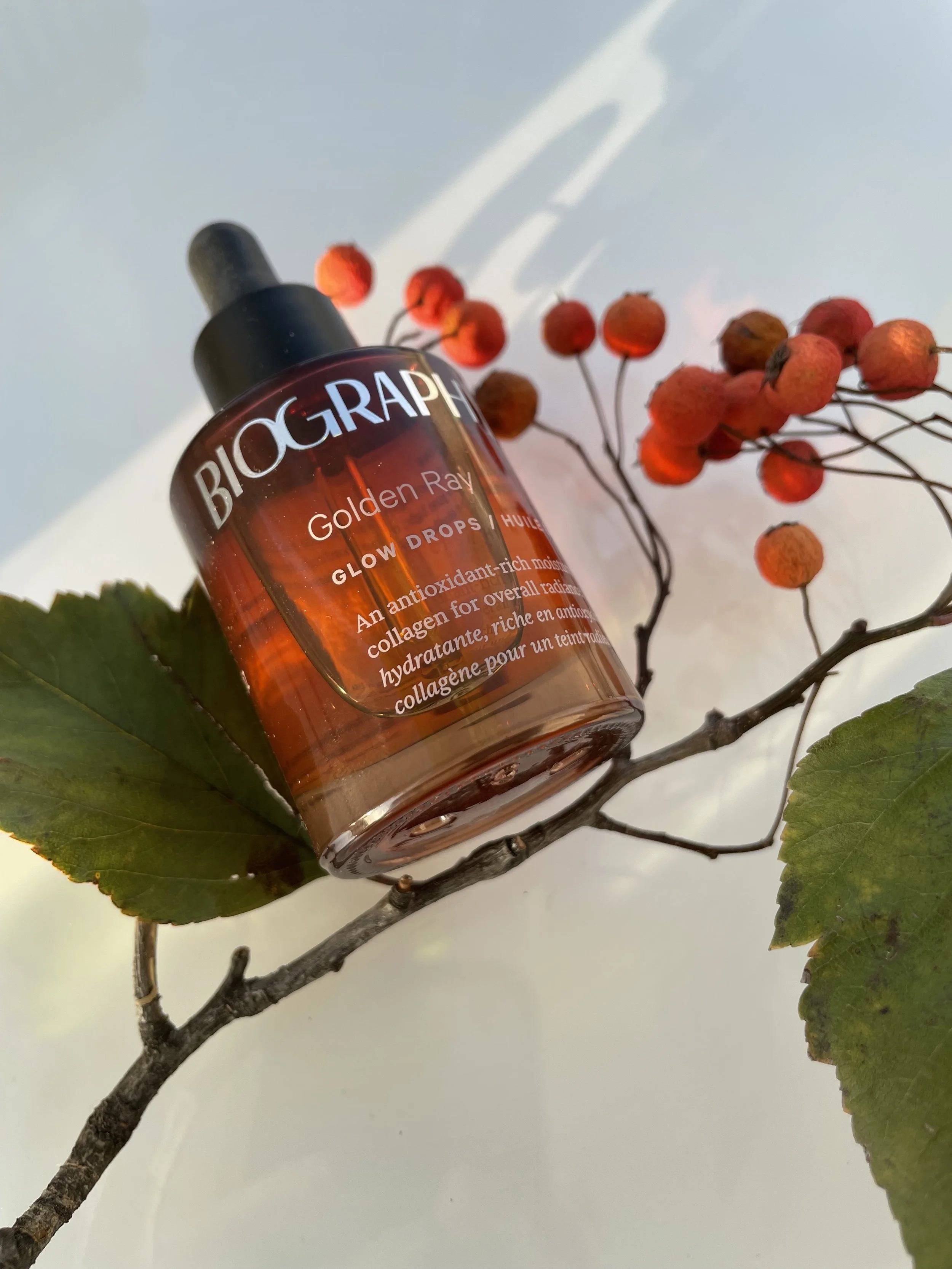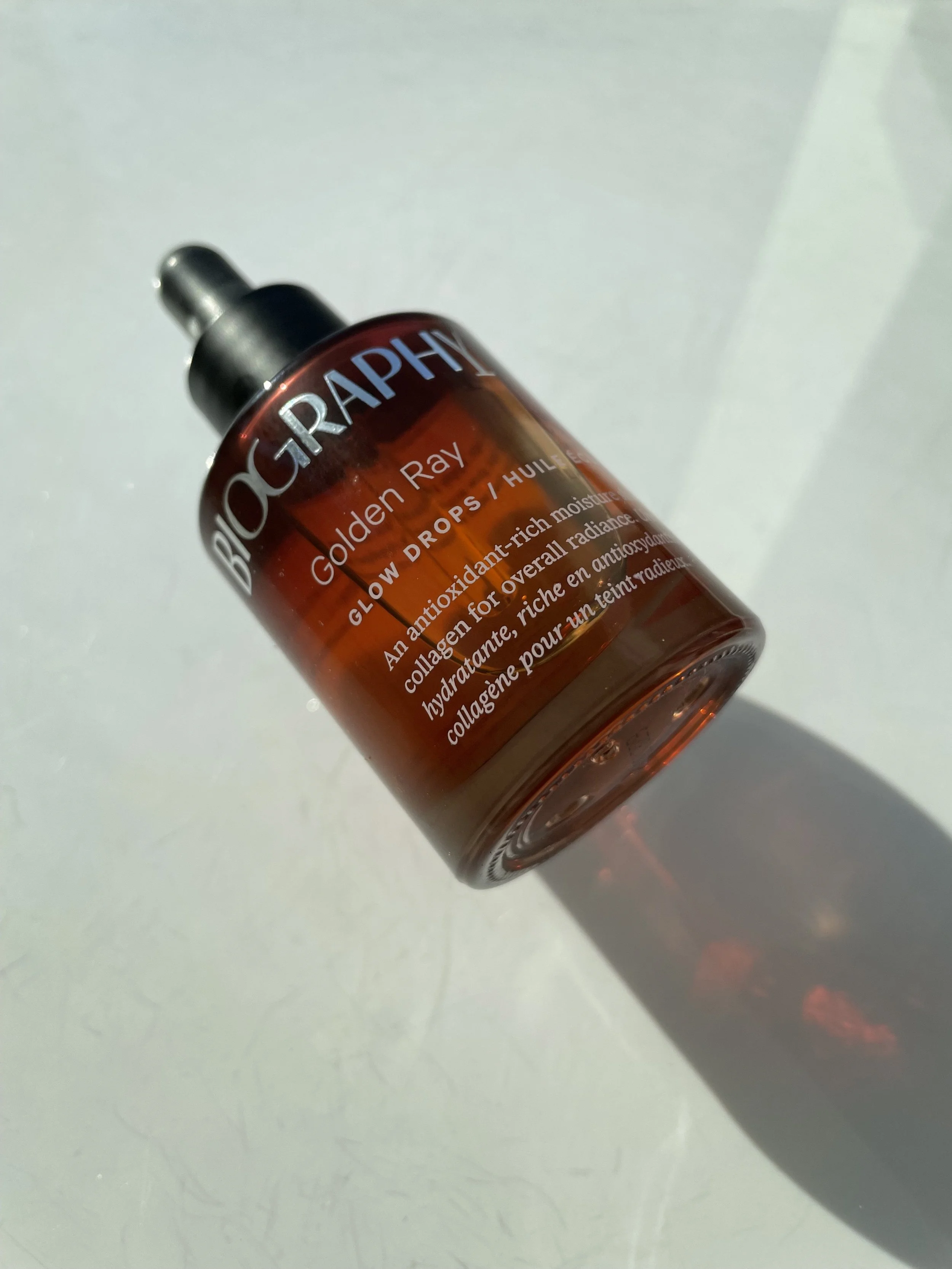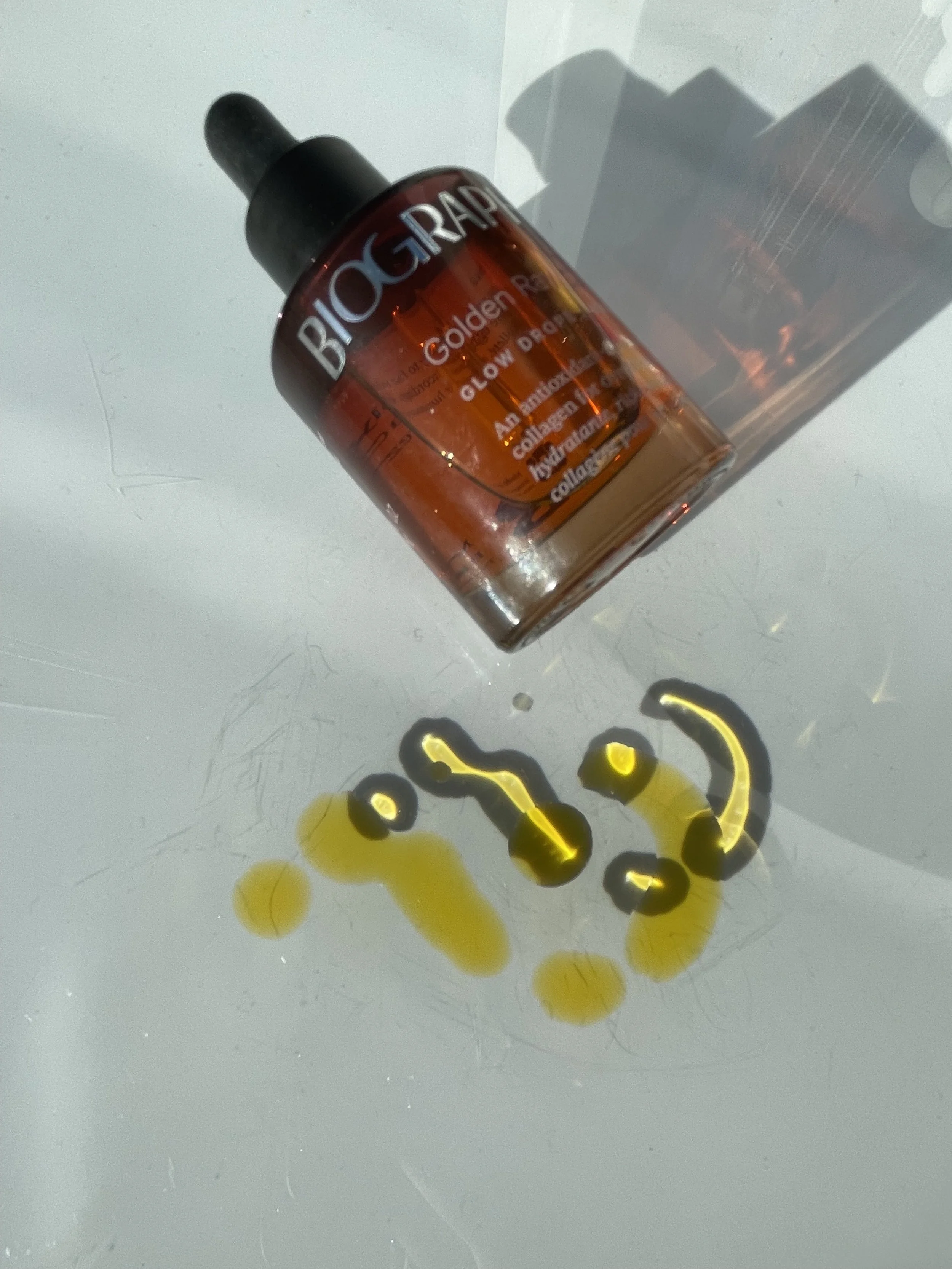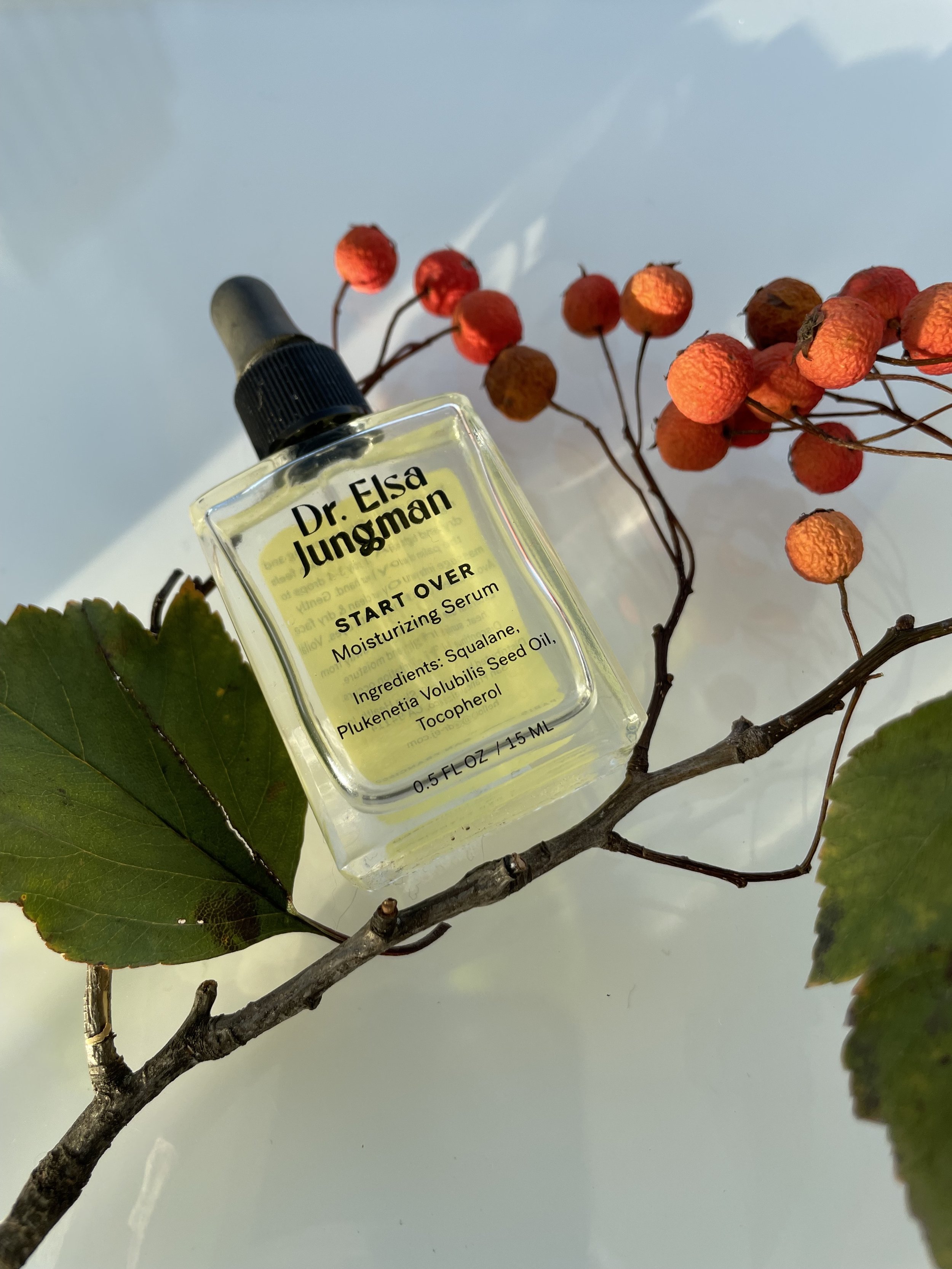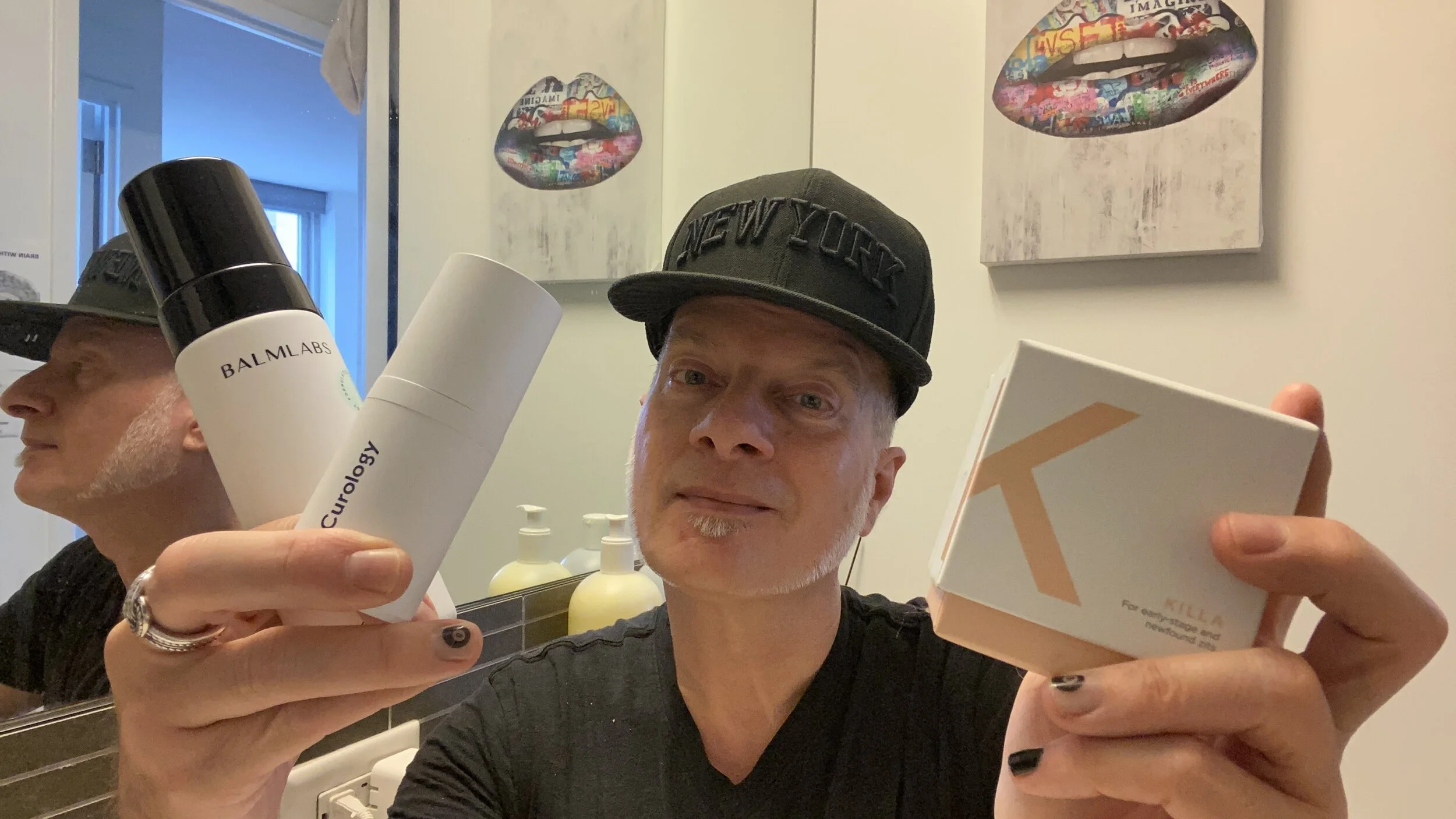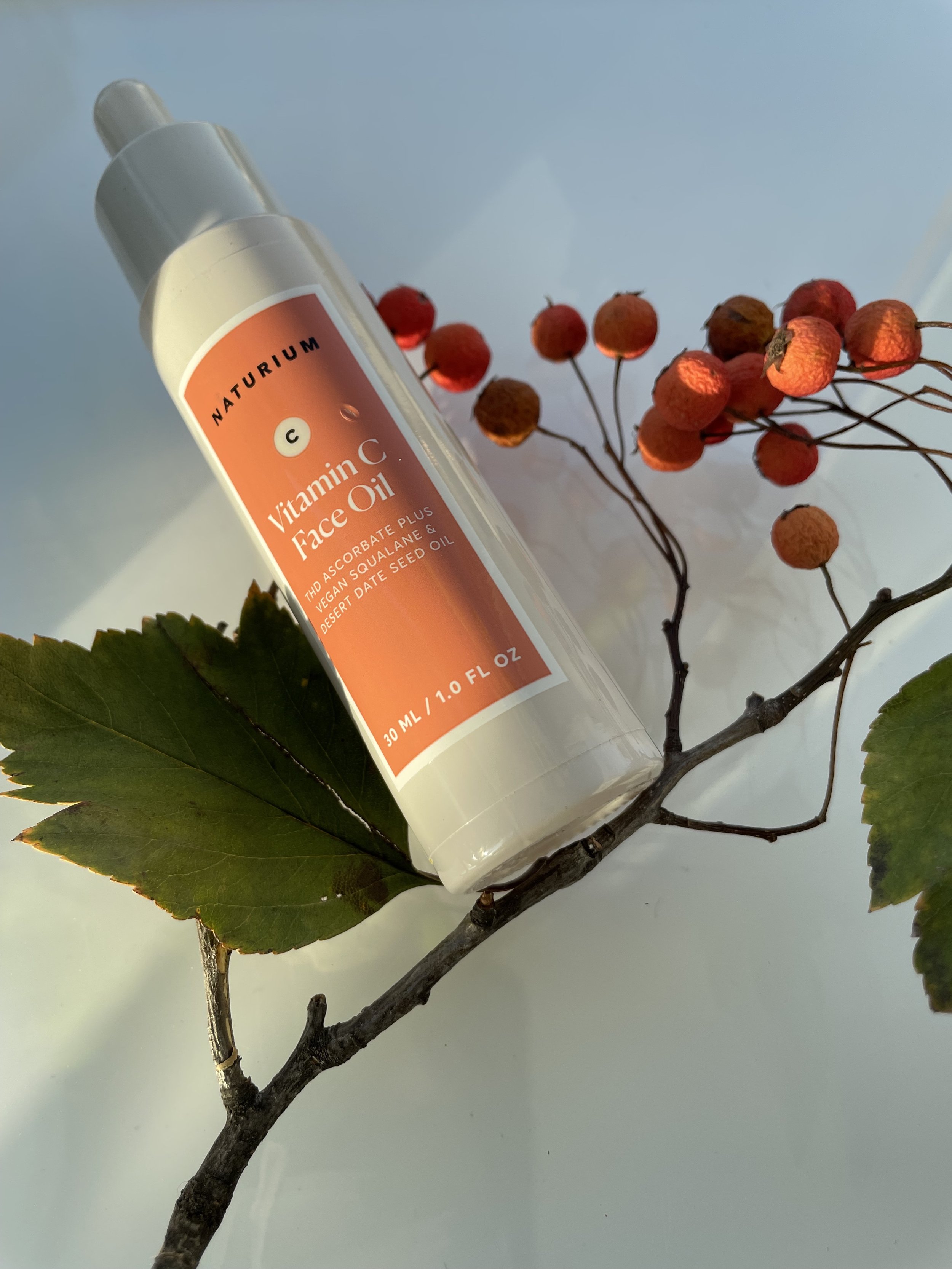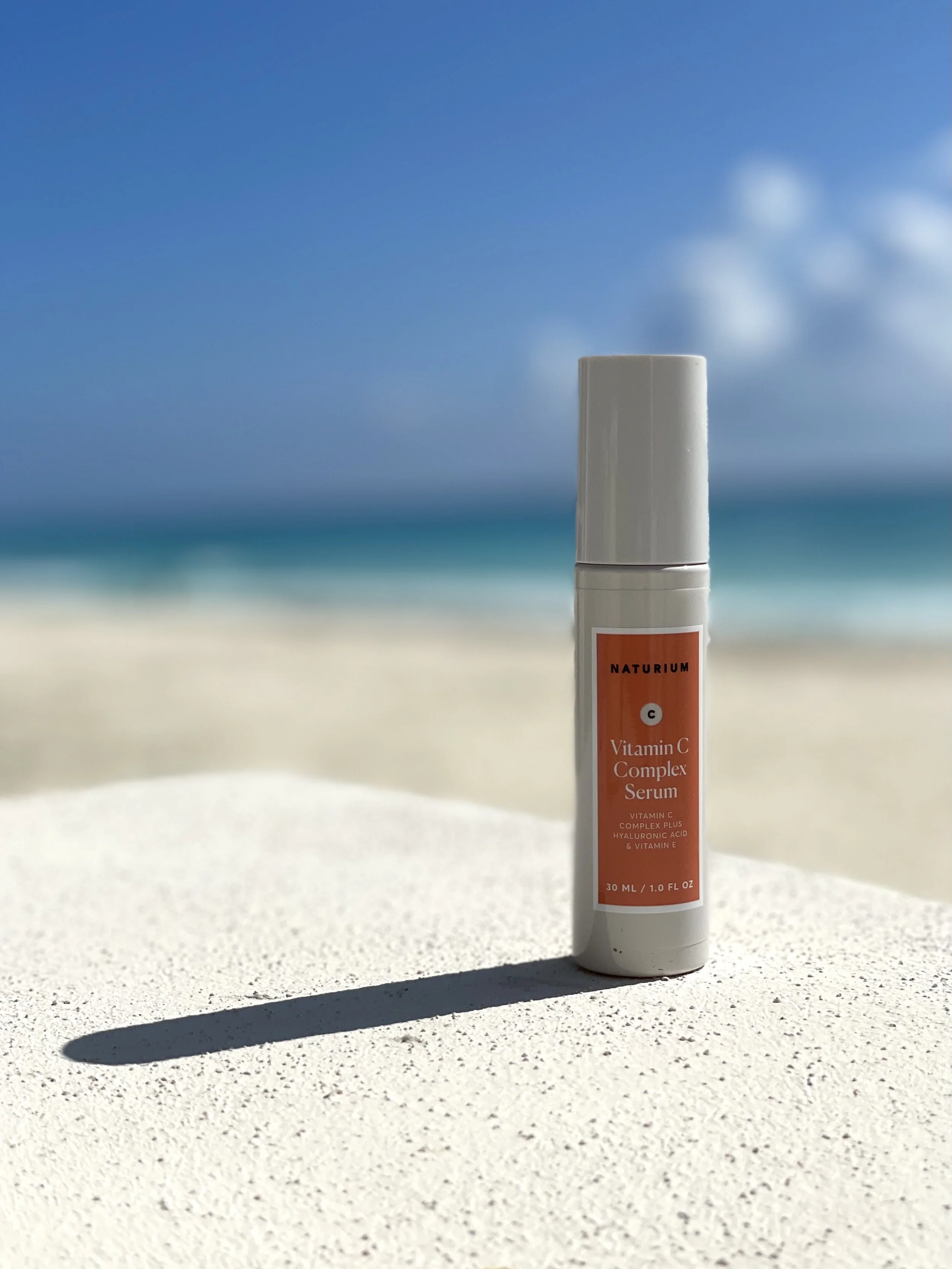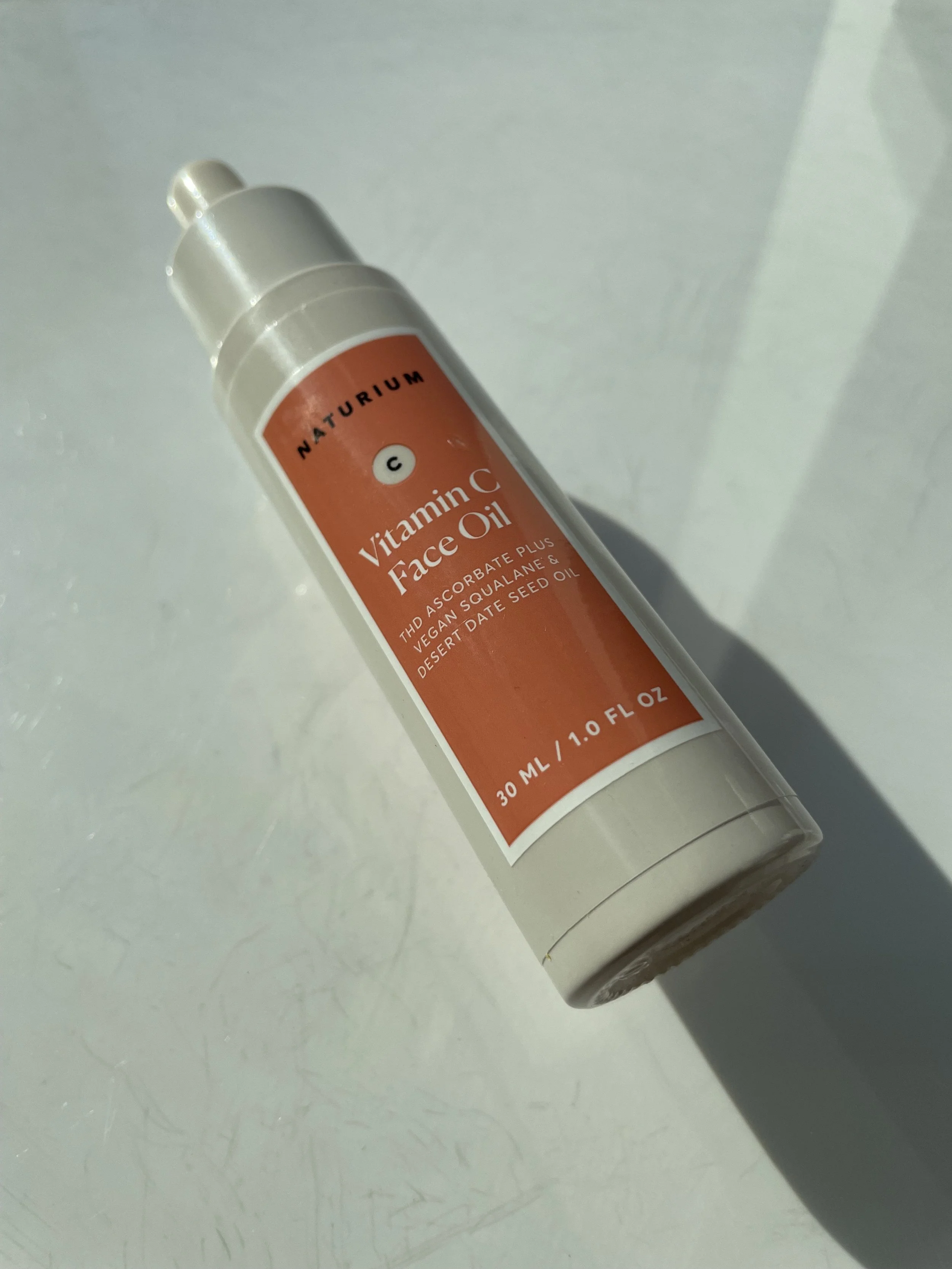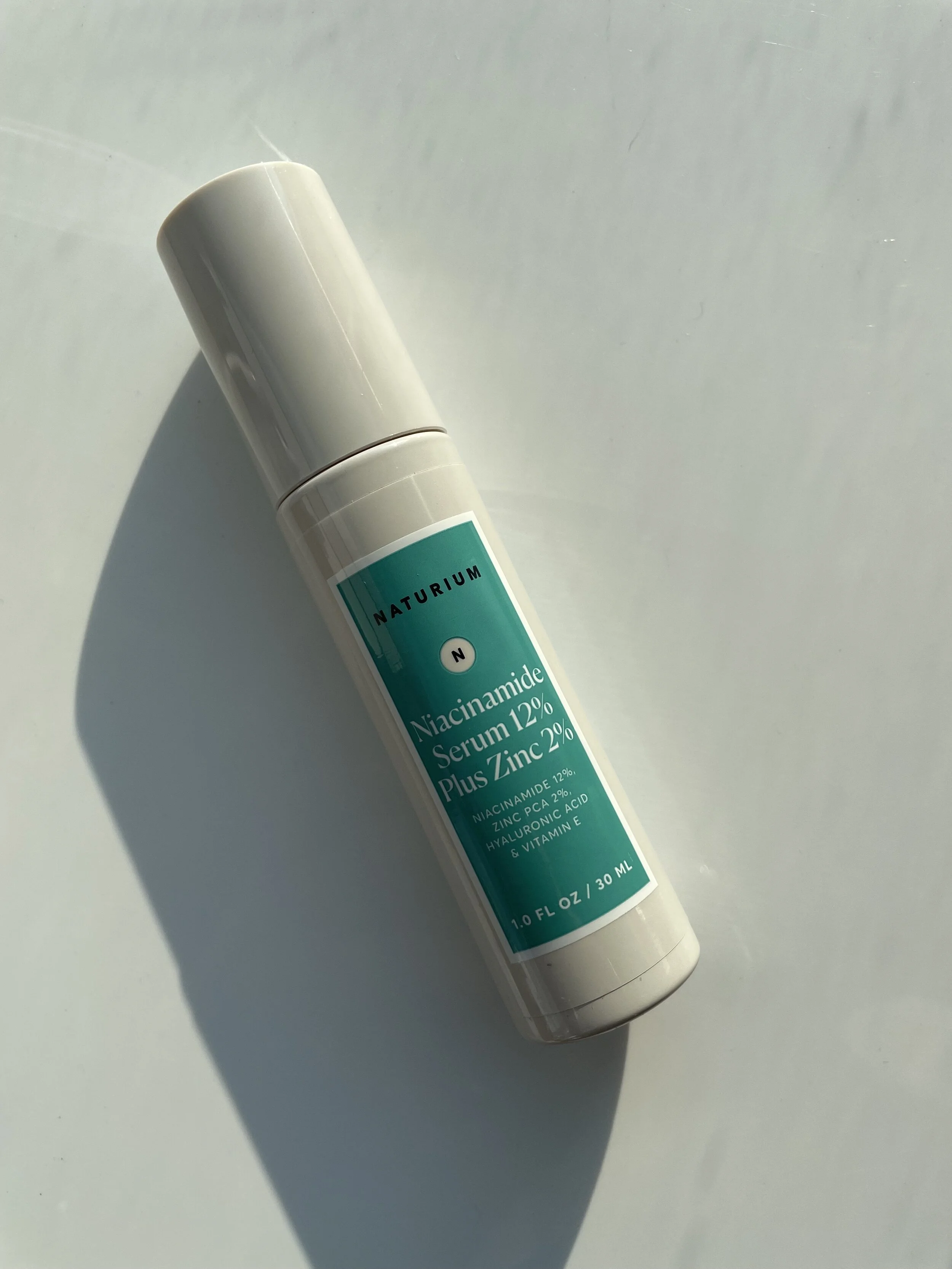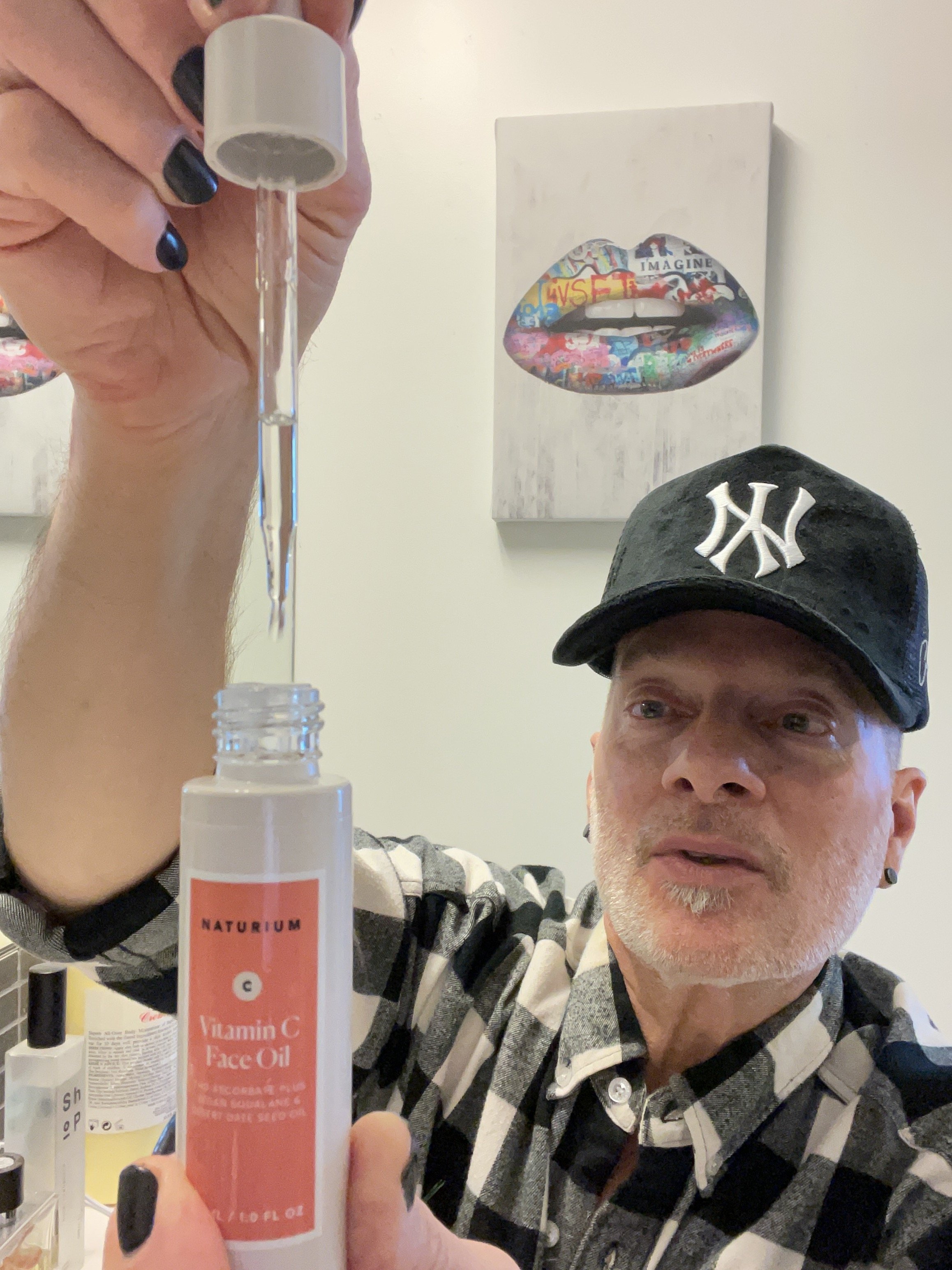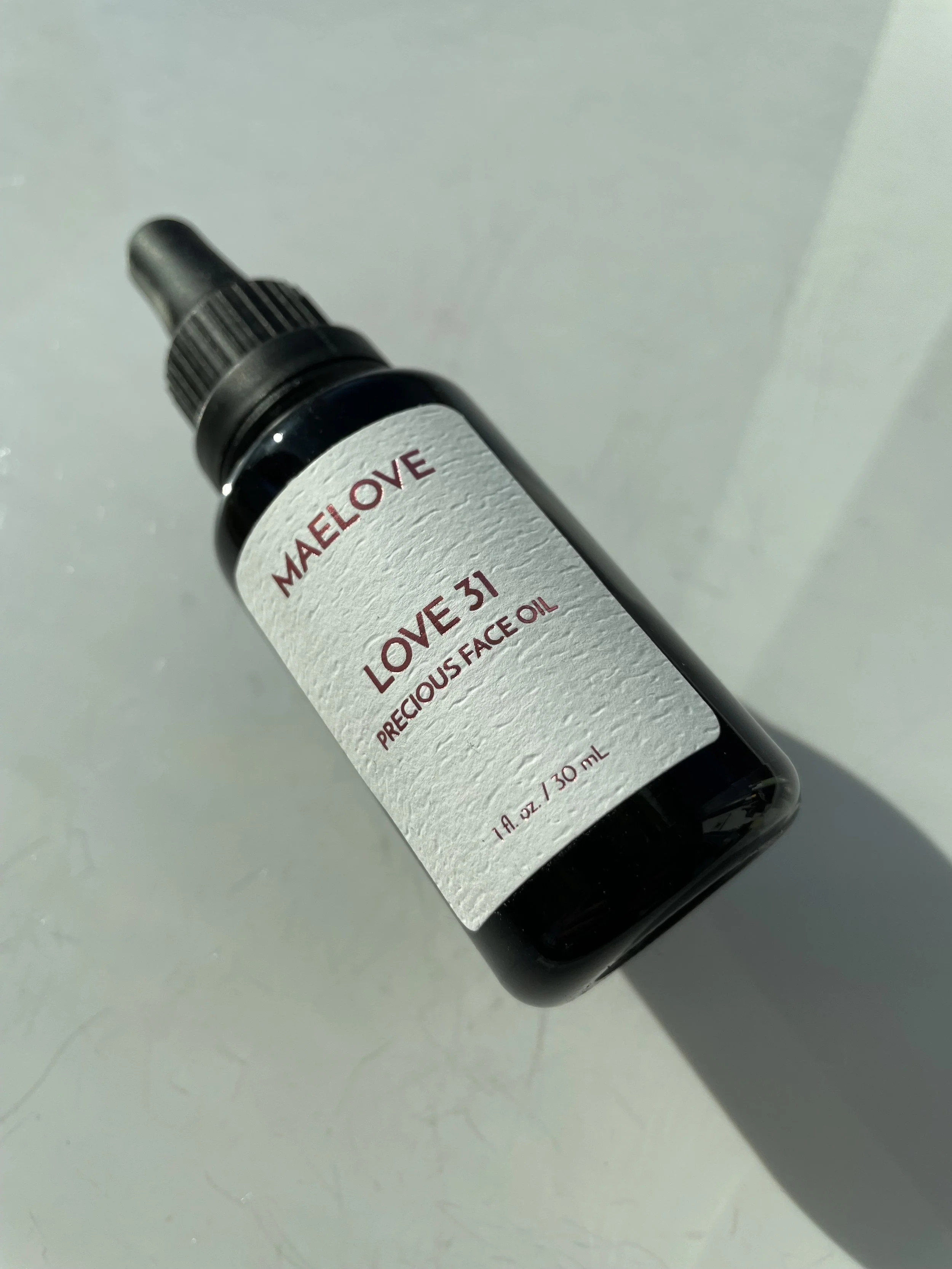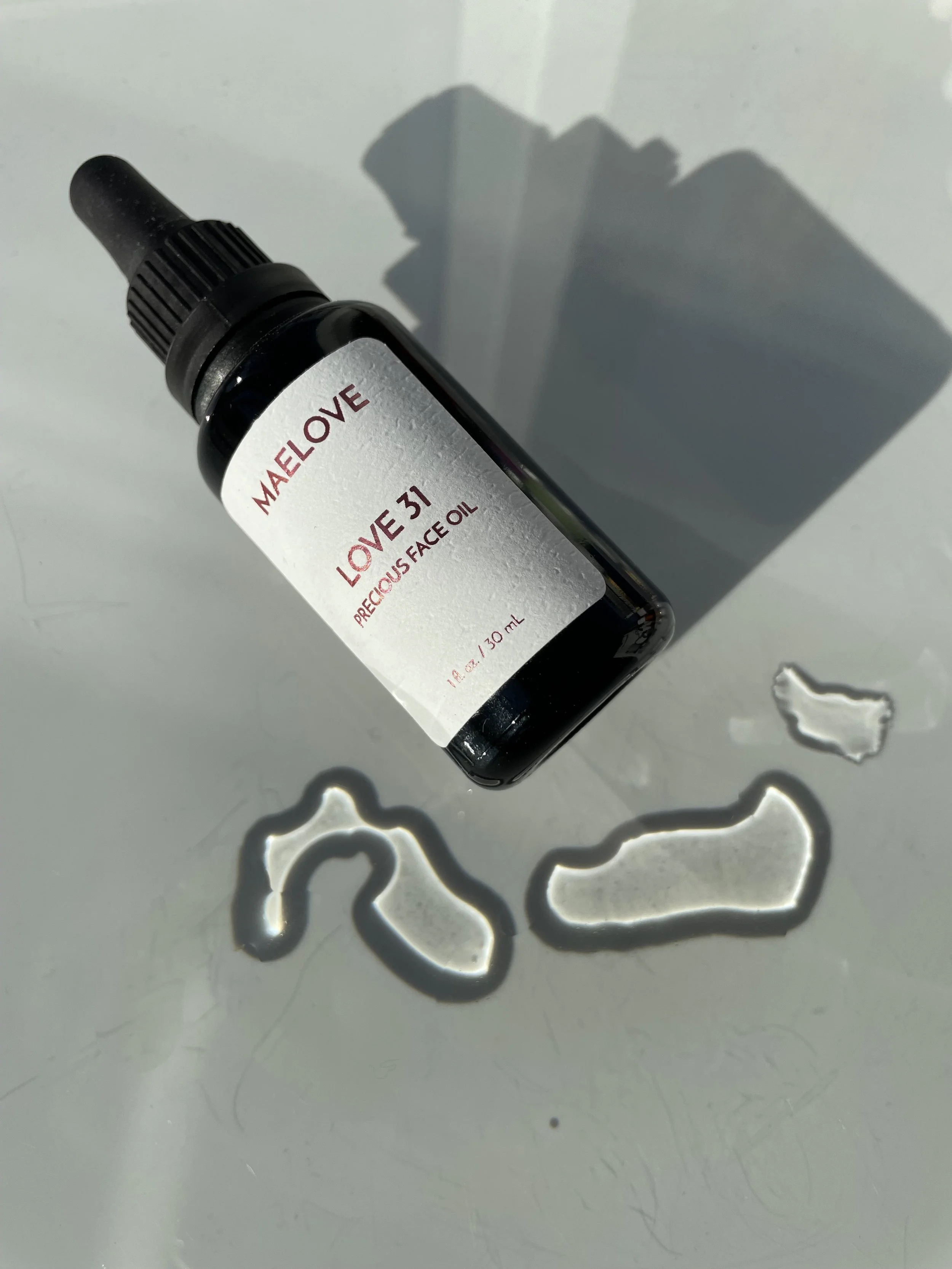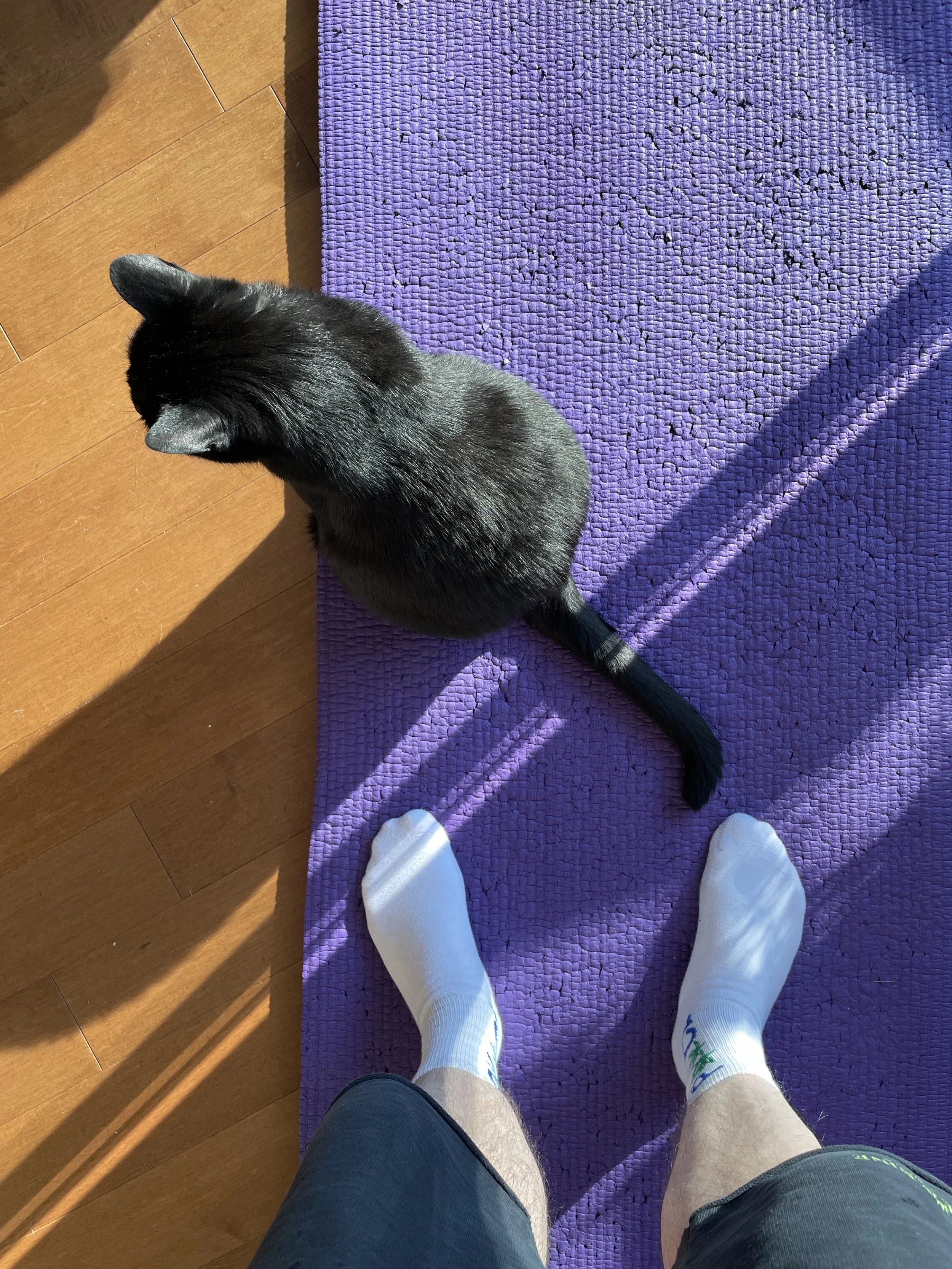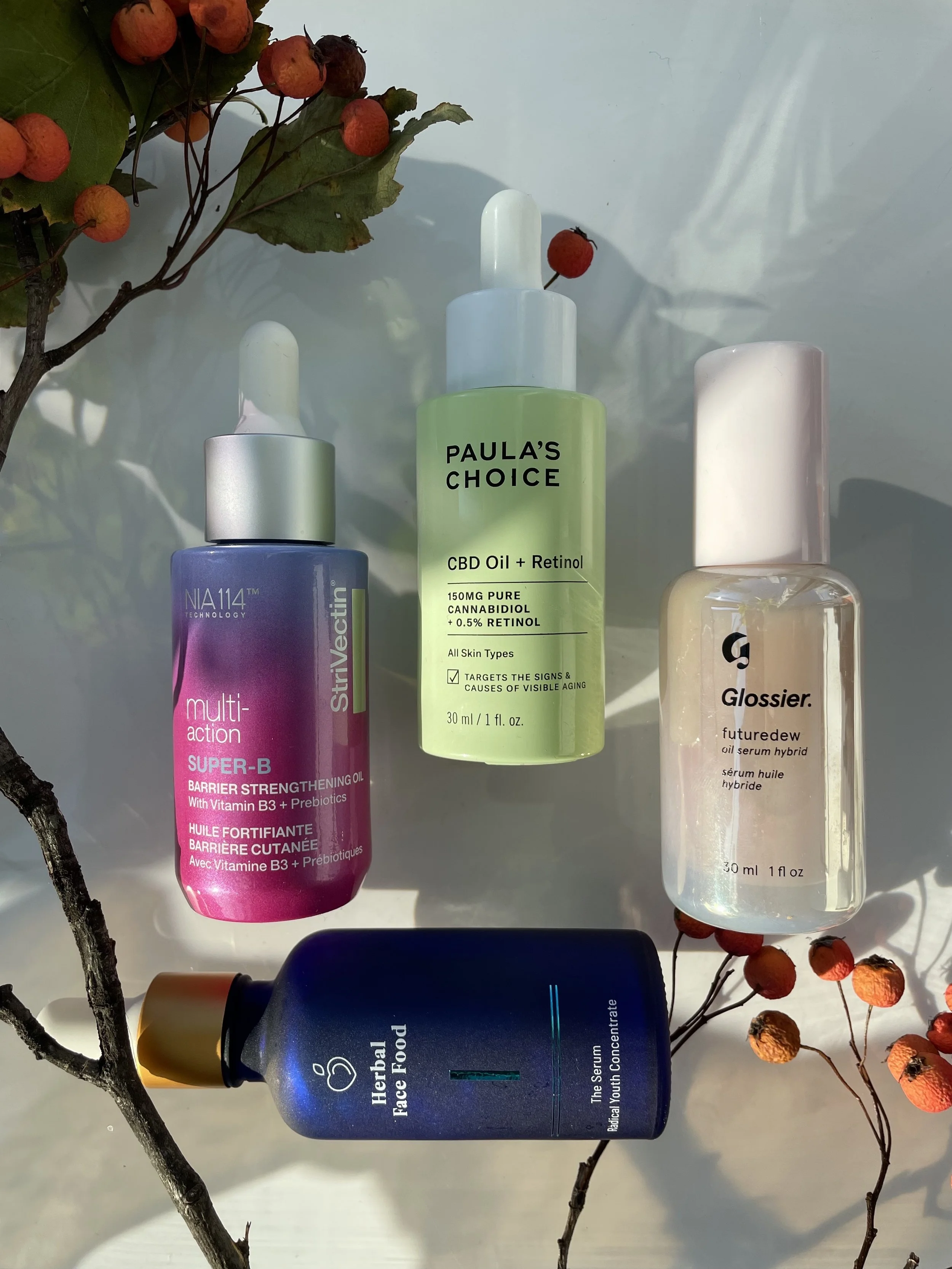SEASONAL SKINCARE TRANSITIONING: FACIAL OILS I LOVE THAT MAKE ME EXCITED FOR COLD WEATHER - PART ONE – BEST FACIAL OILS, BEST FACE OILS FOR DRY SKIN
I was craving creative inspiration this past week. So I thought why not go back to the inspiration well — to my favorite nail salon and the Brooklyn Museum.
I had been wanting to get my nails painted in a matte black instead of the high-gloss black gel I usually do. With a wintry chill settling in, it just felt like the right time to tone it down a notch.
So matte black it is! And Jin Soon, my trusted nail salon in TriBeCa always gets me straight.
After our mani-pedi session, my buddy and I headed back to Brooklyn. Over the past few months, I’ve caught a few really dope, inspirational exhibits at the BK Museum including the KAWS: WHAT PARTY? experience — twice. I’m a huge fan of Brian Donnelly’s, the Brooklyn-based artist known as KAWS, who is most famous for iconic characters that feature huge X’s for eyes. In fact, there’s a massive KAWS doll floating in the water off the coast of Singapore as I write this. You can catch it here.
Following the KAWS exhibit a few weeks ago, we were fortunate to hit the museum to view the Obama Portraits, a pair of paintings of President Obama and First Lady Michelle Obama. Painted by Kehinde Wiley, the portrait of the former president seated in what seems like a sea of leaves, was the most captivating of the two for me. That’s not to say that Amy Sherald’s portrait of Mrs. Michelle Obama isn’t jaw-dropping; it is. But there’s just something surreal about Obama’s portrait. (Psst…check out the pix on my blog here.)
So I was excited to have the opportunity to catch the new Andy Warhol exhibit at the Brooklyn Museum on its opening day. Titled Andy Warhol: Revelation, the exhibit is quite unexpected, featuring Warhol’s lesser known religious works.
I’ve long been a fan of Warhol’s and his pop culture art. He’s one of those American icons whose life made an indelible mark on me and whose death has always stuck with me. You know how there are people — celebrities and loved ones alike — who’ve touched you enough that you remember where you were when you found out they died?
Warhol was like that for me.
The day he died, I was sitting in a cafe with college friends in a restaurant in Worcester, Massachusetts, where I studied English. Interestingly, I went to a Catholic college so the Andy Warhol: Revelation exhibit resonated with me on a different, deeper level.
According to the museum,
Andy Warhol: Revelation examines themes such as life and death, power and desire, the role and representation of women, Renaissance imagery, family and immigrant traditions and rituals, depictions and duplications of Christ, and the Catholic body and queer desire.
Among the more than one hundred objects on view are rare source materials and newly discovered items that provide a fresh and intimate look at Warhol's creative process, as well as major paintings from his epic Last Supper series (1986), the experimental film The Chelsea Girls (1966), an unfinished film depicting the setting sun, commissioned by the de Menil family and funded by the Roman Catholic Church, and drawings created by Warhol’s mother, Julia Warhola, when she lived with her son in New York City.
Warhol has always inspired me and the new exhibit nourished my soul in unexpected ways. It was intense, captivating and oddly disconcerting. As with most things that touch on my own Catholic upbringing, it left me questioning, curious for more.
Of course, that means I need to go back and take it all in again. Art is, after all, about introspection and self-reflection…
The skincare stuff starts here.
This past week was the coldest it’s been since mid-March. I’m nervous that it’s going to be a brutally damp, cold winter.
Every October, at the onset of the cooler months here in New York City, I set out to craft a series of blog articles on cold weather skincare and winterizing the skin to defend against skin-aging dryness and dehydration. This year, I’ve themed the series around Seasonal Skincare Transitioning — an apt characterization of what our skin goes through when the climate changes so drastically.
The first article kicked off a two-part series on the best face creams for dry skin and all skin types in the cold. Titled, Seasonal Skincare Transitioning: Moisturizers I Love That Make Me Excited For Cold Weather, the series features my top picks for all skin types. Each of the articles highlights one cold weather option for each of the four major skin types — dry, oily/acne prone, sensitive, and normal or all skin types.
SEASONAL SKINCARE: MOISTURIZERS I LOVE THAT MAKE ME EXCITED FOR COLD WEATHER
The first article featured one of my favorite cold weather face creams ever, the Skinfix Barrier+ Triple Lipid-Peptide Face Cream. With a real focus on skin barrier health, Skinfix is, in my opinion, one of the best clinical skincare brands. And the brand’s Triple Lipid-Peptide Face Cream is simply among the best moisturizers for dry skin — and just about all skin types in winter except perhaps very oily and blemish prone.
If you haven’t yet tried TLPC, I encourage you to check out my full review of it here!
I also included the Skinfix Barrier+ Triple Lipid-Boost 360° Eye Cream in my initial collection as the single eye cream recommendation. It’s a near-perfect eye cream that’s got everything the skin around the eyes needs, particularly during the harsh cold months of fall and winter.
PRODUCT REVIEW: YOUTH TO THE PEOPLE ADAPTOGEN DEEP MOISTURE CREAM – BEST MOISTURIZER FOR IRRITATED SKIN
Last week I continued the series on cold weather skincare with my top picks from two of my favorite skincare brand’s — Deciem’s The Ordinary and NIOD brands. Titled, Seasonal Skincare Transitioning: The Best Products From The Ordinary And Niod That Get Me Excited For Cold Weather! the article was a nod to Deciem’s annual Slowvember event in which the company offers a 23% discount off of all skincare from all of its brands for entire month of November — except, notably, on Black Friday.
This year, my Slowvember picks include two products from The Ordinary — the Squalane Cleanser and the 100% Plant-Derived Hemi-Squalane, a personal fave dry facial oil.
From NIOD, I featured three of my favorites. The brand’s Multi-Molecular Hyaluronic Complex (MMHC2) is one of the best Hyaluronic Acid serums I’ve ever come across. I’ve probably been through two dozen bottles of it over the years!
I invite you to explore what I consider some of the best products from The Ordinary and NIOD — and certainly among the best skincare for colder weather. You can catch the article here.
SEASONAL SKINCARE: THE BEST PRODUCTS FROM THE ORDINARY AND NIOD THAT GET ME EXCITED FOR COLD WEATHER!
Which brings me to this week’s feature on Seasonal Skincare Transitioning! Next up is my annual two-part series on facial oils. Each year, I cap off my winter blog series with a piece on the best facial oils for dry skin.
I love facial oils!
A great facial oil is the heaviest moisturizer in your defensive arsenal against the dry, low-humidity air characteristic of the colder months no matter the climate. Most people don’t think of facial oils as a “moisturizer.” What usually comes to mind is a cream. And I know facial oils aren’t popular with everyone — particularly those with oily and acne prone skin. Psst…even an oily skin type can benefit from a facial oil suited for oily skin — like the Blume Meltdown Acne Oil.
PRODUCT REVIEW: BLUME | MELTDOWN ACNE OIL - BEST FACIAL OIL FOR OILY SKIN, BEST FACIAL OIL FOR ACNE
In winter, I prefer facial oils to conventional cream moisturizers, especially the ones that regrettably come in jars. I didn’t always understand facial oils and, like so many, believed they were somehow better for other people, perhaps best for very dry skin types.
One of my favorite facial oils of all time is the Codex Bia Facial Oil — one of the best organic face oils for dry skin. The Bia Facial Oil is rich, silky, and elegant. It doesn’t feel overly greasy on skin but it does feel like your skin is being treated to something really healthy and nourishing. That’s heaven in winter! If you’re unfamiliar with Codex, it’s a clean, luxurious brand and their products are truly exquisite. You can explore my review of the Codex brand on the Skincarma Blog here.
Oh the misunderstood facial oil. A lot of people dislike them because they tend to sit on the skin, or barely absorb into the skin’s surface. That’s kind of the point. They’re the most occlusive of all skincare products, meaning they’re intended to defend skin against moisture loss. They do that by occluding, or blocking water from escaping through the surface and dehydrating your skin.
PRODUCT REVIEW: CODEX BEAUTY BIA COLLECTION FACIAL OIL – ONE OF THE BEST NATURAL FACE OILS FOR DRY SKIN
What Does a Facial Oil Do and What Are the Benefits of Face Oil?
There is a really wonderful article from the experts on the Paula’s Choice Research Team titled, How Facial Oils Help Skin. Here is a glimpse of their insights:
You may have noticed more and more brands are launching pure oils like argan, jojoba, coconut, or blends of oils with all manner of tempting claims. But do these facial oils live up to their potential?
The research-supported facts about what plant oils can do for skin is rather fascinating. They're not miracles, but the right plant oil or a beautiful a blend of beneficial oils can make a remarkable difference for dry, flaky, or dehydrated skin; in fact, non-fragrant facial oils can be suitable even for eczema-prone skin. Facial oils are for anyone whose skin could use a boost of nourishing, smoothing renewal, especially when seasonal cold or drier climates disturb your skin.
What are Facial Oils?
Facial oils can include any fragrant plant oils (often called essential oils, but they are anything but essential—more on that in a moment), non-fragrant plant oils (your skin will love these) or synthetic oils (such as mineral oil—which gets a bad rap in the world of skincare but for the record, the research doesn't support the negative information you find on the Internet).
Despite the name, these oils can be used anywhere on the face or body—there's no research showing that certain oils are better for one part of your skin or another. Such a notion is without logic or science.
So what makes facial oils so uniquely beneficial for your skin health in the cold?
Well, one of the most important benefits of a well-formulated facial oil is to prevent dehydration through trans-epidermal water loss, or TEWL. Dehydration hasn’t traditionally been recognized as one of the main causes of skin aging. In fact, I consider both sun damage and dehydration to be the two key culprits in all signs of aging — including the formation of fine lines and wrinkles, loss of firmness and even sagging.
My own neck is the perfect barometer!
During the colder months, the skin on my neck seems to hollow out as the layers dehydrate and deflate. As hard as I try, it’s often a losing battle. Fortunately, my skin bounces back around March. It’s a fascinating experiment as I struggle to keep my skin optimally hydrated in the cold. I’m much better at it now than I used to be; and that’s because I fully understand the effects of TEWL on skin health.
BRANDS I LOVE: CODEX BEAUTY - CLEAN, NATURAL SKINCARE FOR HEALTHY, YOUTHFUL SKIN
What Is Trans-Epidermal Water Loss?
For a deep-dive into trans-epidermal water loss (or TEWL), there’s an excellent article on the health website Skin Better titled, What Is Transepidermal Water Loss and Why Is it Important? It’s available to read here. In the piece, the author explains TEWL as follows:
“The skin is comprised of three primary layers: the epidermis, the outermost layer; the dermis or middle layer; and the hypodermis, the undermost layer. When water passes from the dermis through the epidermis and evaporates from the skin’s surface, this is known as transepidermal water loss (International Journal of Pharmaceutics).
While TEWL is a process that your skin naturally regulates, certain factors that can damage the skin’s barrier function can also affect TEWL levels. Circumstances such as injury, low-humidity weather conditions and topically applied products that dry out the skin can impact TEWL.
To achieve this, combine humectant and occlusive skincare ingredients.
Transepidermal water loss can contribute to a variety of dry skin conditions, and although it is a natural process, there are ways that you can help your skin stay moisturized and hydrated. Hydration refers to the water content of the skin, whereas moisturization is the skin’s ability to retain those water molecules. Therefore, your skin needs both elements to maintain desirable levels of TEWL.
To achieve this, combine humectant and occlusive skincare ingredients. Humectants help to draw moisture to the epidermis, either from the air if it is humid enough, or from the underlying dermis in low-humidity conditions. Because water content that is drawn from the dermis can be lost through TEWL, it’s important to combine the use of humectants with occlusives. Together, these ingredients create a reservoir of moisture in the epidermis and act as a barrier on the skin to help prevent TEWL by sealing in that moisture. The occlusive agents simultaneously keep pollutants, toxins and harmful bacteria out (Skin Therapy Letter).”
MY FAVORITE HUMECTANT SERUMS FROM PAULA'S CHOICE, THE INKEY LIST AND MORE - BEST HYALURONIC ACID SERUMS
The Skincarma “Lock and Block” Prevents Dehydration
To start, preventing dehydration in the first place requires drinking enough water. That differs for each of us based on our weight, the foods we eat, and the climate we live in. It’s even more important during colder periods.
A good rule is to drink one ounce of water each day for every pound of body weight. So, if you weigh 150 lbs., you’ll need to drink 150 ounces of water each and every day to keep your body and your skin optimally hydrated.
Then, employing skincare to treat and prevent dehydration requires what I refer to as a “lock and block” strategy.
It begins with a dedicated humectant serum applied to the skin in both your AM and PM routines that helps to lock water in. Follow with a moisturizer composed of a healthy balance of both humectants and oils to block and prevent the trans-epidermal water loss that can lead to dehydration.
WATCH MY VIDEO REVIEW OF
MY FAVORITE HUMECTANT SERUMS FROM PAULA'S CHOICE, THE INKEY LIST, GHOST DEMOCRACY AND MORE
ON MY YOUTUBE CHANNEL HERE
One of the great things about facial oils is they’re water-free, meaning they last a lot longer. Over the years, I’ve amassed quite the museum-worthy collection of facial oils. And I’m excited to share the first four in my two-part series on my FW21 facial oil picks.
Each stands out for one reason, or several reasons — among them, uniqueness, superior quality, versatility, innovation and, as is the case with so many facial oils, sheer damn pleasure. That really is the gist of it. Facial oils are simply a pleasure to use! If you're not using a facial oil yet — either daily or a couple of times a week — now’s your chance to find one you love.
In part one, the first four FW21 facial oils include Biography’s Golden Ray Glow Drops. While I’ve reviewed it on the blog previously, I’ve simply fallen in love with it all over again this year. It’s perhaps the most luxurious of the FW21 collection.
I’m a huge fan of the clean, democratically priced Naturium brand and have reviewed several of their face serums on the blog over the past several months. They have a number of Vitamin C serums and oils and the brand’s Vitamin C Face Oil is a wonderful formulation. More on it below.
Dr. Elsa Jungman’s Start Over Moisturizing Serum is formulated to fix the microbiome by rebalancing surface bacteria and strengthening the skin barrier. Dr. Elsa is one of the few true experts on the skin microbiome, what makes it tick, and what it needs to tick right.
Lastly, I’m excited to feature the Maelove Love 31 Precious Face Oil — my first product inclusion from the clean beauty brand.
Let’s have a look at my FW21 facial oils, which I consider ideal for cold weather in part one of the series…
Biography | Golden Ray Glow Drops
I was first introduced to the Biography brand over a Zoom call in the depths of the pandemic lockdown. I loathe Zoom calls, but this one was actually interesting.
Biography’s founder, Linda Thompson, has been crafting her new, smart brand and uniquely active facial oils for the better part of eight years. With intelligent and intriguing messaging (this writer appreciates that most!), the brand debuted with four facial oils in all, but the Golden Ray Glow Drops is my personal fave to this day.
What We Do.
It’s a short list: we make face oils. Namely, four active oil blends with the power to change your skin—and your story. We’re hawkish about our craft: what other companies may outsource, we handcraft from scratch, doing the meticulous designing, formulating, and clinical testing. The result is skincare that actually delivers what it promises: meaningful, visible change from naturally healing sources, bound to replace your creams and moisturizers in one fell swoop (or maybe four).
Did you catch that? “The result is skincare…bound to replace your creams and moisturizers in one fell swoop (or maybe four).” That speaks directly to me. I’ve long espoused ditching conventional face creams in jars to step up your skincare game.
The Biography Golden Ray Glow Drops is the perfect place to start your journey to optimizing your skin health. It’s a rich, luxurious blend of some of the best organic oils for nourishing skin and promoting skin heath.
Many of the oils Linda selected for the Golden Ray Glow Drops facial oil actually do double duty as potent antioxidants that help defend skin against aging environmental aggressors. Sure, skin does that relatively well on its own, but all skin types can benefit from more antioxidant protection.
Honestly, I don’t believe you can have enough antioxidants in your regimen. In fact, I look at antioxidants as the unsung heroes of anti-aging skincare. Antioxidants are anti-aging. Sunscreen is anti-aging. Marketing average skincare products as anti-aging is not anti-aging.
What Are Antioxidants and What Do Antioxidants Do for Skin?
Antioxidants possess numerous benefits for the skin, including preventing skin damage and multiple signs of aging. There’s an excellent article from the experts on the Paula’s Choice Research Team titled, How Antioxidants Fight the Signs of Aging that you can catch here. This is what I found most insightful:
Antioxidants for Skin Benefits
Antioxidants play a unique role when it comes to diminishing the appearance of fine lines and wrinkles. Years of environmental damage (including unprotected sun exposure—one more reason to apply that broad-spectrum sunscreen!) slowly chip away at skin’s natural ability to look and feel healthy. As this damage builds up, skin gradually loses its ability to recover and bounce back as it once did. It’s not an exaggeration to say that after years of damage, skin becomes overwhelmed, and its “look young systems” begin to slow down.
Antioxidants in skin care step in to help shield skin’s surface from further deterioration by calming stressed skin and defending against the visible effects of pollution —something all of us encounter on a daily basis.
What happens as a result of applying antioxidants to your face is truly impressive: Skin’s appearance begins to turn around! It regains a firmer feel and more even skin tone—and those wrinkles you’re probably not fond of will visibly soften.
The Biography Golden Ray Glow Drops facial oil is infused with multiple non-fragrant plant oils, many of which are organic. Among the organic oils are Jojoba Seed Oil, Camellia Seed Oil, Pumpkin Seed Oil, Rosehip Fruit Oil and Raspberry Seed Oil — notably the first five ingredients in the entire INCI.
Most intriguing and unique about the formula is the inclusion of what the brand terms, French marine algae. I’m not aware that French seaweed is any more beneficial to the skin as seaweed anywhere else on Earth. But many forms of algae possess superb nourishing, hydrating and humectant benefits for the skin. Algae also has antioxidant properties for the skin. I love that Linda infused her already superbly pampering oil with it!
Golden Ray Glow Drops is a wet oil with a deep, neon orange hue that reminds me of the iconic Phoenix facial oil from clean luxe brand Herbivore. I suspect it owes its electric color to the Sea Buckthorn Oil — as is the case with Phoenix.
It’s not too heavy, not too light. Just lavishing enough to prevent dehydration and keep your skin feeling plump and healthy throughout the night. Hey, it also makes the perfect #selfcaresunday treat if you’re just chillin at home and don’t need to apply a sunscreen.
What I like about it: The Biography Golden Ray Glow Drops is an exquisite blend of organic, antioxidant non-fragrant plants oils. It has a wonderfully sensorial experience to it that makes it exceptional.
What I don’t like about it: Despite the fact that the vast majority of the formula is composed of non-fragrant plant oils, there are several fragrant oils at the very end of the INCI: Cedarwood Oil, Palmarosa Oil, Ylang Ylang Oil, Frankincense Oil, Geranium Oil. These give it a slightly fragrant scent. While it does dissipate in time, fragrance in skincare always gives me pause.
Who it’s for: Normal, dry and particularly very dry skin types. Since there is some fragrance in the Golden Ray Glow Drops, sensitive skin types may want to consider another option.
SHOP THE BLOG: Purchase the Biography Golden Ray Glow Drops for $112 here.
The Ingredient List of the Biography Golden Ray Glow Drops:
Organic Jojoba Seed Oil, Organic Camellia Seed Oil, Organic Pumpkin Seed Oil, Organic Rosehip Oil, Organic Raspberry Seed Oil, Pomegranate Seed Oil, Organic Cranberry Seed Oil, Carrot Seed Oil, Watermelon Seed Oil, Organic Avocado Oil, Organic Sea Buckthorn Oil, Organic Amla Oil, Vitamin E, Marine Algae Extract, Sunflower Seed Oil, Safflower Seed Oil, Rosemary Extract, Cedarwood Oil, Palmarosa Oil, Ylang Ylang Oil, Frankincense Oil, Geranium Oil.
RETINOL, RETINOIDS, RETINOIC ACID PART ONE: BEST RETINOL SERUMS, BEST RETINOL FACE CREAMS
Dr. Elsa Jungman | Start Over Moisturizing Serum
I’ve been reading a lot about microbiome health lately and exploring the links between gut health and the skin. The body’s two key microbiomes are found in your gut and on the surface of your skin.
Early this year, I explored the new Layers probiotic skincare brand that focuses on the microbiome health – both inside and out. The article was titled, Brands I Love: Layers Probiotic Skincare – Best Lactic Acid Serum, Best Probiotic Moisturizer For Microbiome Health. One of the more intriguing products from the brand is the Layers Immunity Moisturizer — one of the best probiotic face creams for microbiome health.
PRODUCT REVIEW: LAYERS IMMUNITY MOISTURIZER – BEST FACE CREAM TO FIX THE MICROBIOME
So Layers was my first serious experience with probiotic skincare for rebalancing the microbiome. My experience of Layers was followed later, around mid-summer, with the introduction of Dr. Elsa Jungman’s skincare range.
As with my introduction to Biography, I met Dr. Jungman over a Zoom call. Dr. Elsa Jungman has a Ph.D. in Skin Pharmacology and has “made it her mission to be an advocate and resource for promoting a healthy skin ecosystem.”
With some of the coolest microbiome skincare I’ve found this year, Dr. Elsa offers a unique service that tests your microbiome health. I recently featured the brand’s Microbiome Test Kit on my YouTube channel. You can catch it here.
WATCH MY VIDEO REVIEW
HOW’S YOUR MICROBIOME DOING? THE BEST WAY TO CHECK YOUR MICROBIOME HEALTH…
ON MY YOUTUBE CHANNEL HERE
With a range that’s 100% focused on microbiome health, Dr. Elsa Jungman offers a cleansing oil and three moisturizing serums, which are essentially facial oils. The collection is intended to rebalance your skin when it’s experiencing sensitivity or to maintain optimal skin health day after day.
To get your skin right again, you’re meant to drop everything you’re doing — all the acids and potent active serums — and pare down to just two products: the Dr. Elsa Jungman Begin Again Gentle Cleanser and the Moisturizing Serum that’s ideal for your skin type.
From Dr. Elsa…
“After suffering from a toxic shock syndrome at 18, my skin was left very sensitive. I’ve dedicated my career studying skin science between Paris and San Francisco to finding and understanding the missing link - the microbiome.
We are creating a movement to help everyone feel at peace with their skin. The more intentional we are with what we use and the more we listen to our inner biology, the healthier we will be.
Now is the time to join together to raise awareness, standards and knowledge of our skin health.”
What Is the Microbiome and What Is the Link Between the Gut and the Skin?
I’ve been exploring the microbiome for the better part of the past year; in particular, its effects on skin health have intrigued me. Randomly, I’ve noticed that my skin seems to act up for no reason. And, of course, as a migraineur, a migraine can strike at any time — again, seemingly for no reason. It was only over the past few months that I’ve really begun to grasp the existence of a gut-brain link.
Rachel Behm, CEO and Founder of Layers explains the body’s microbiomes and the link between our gut and our skin this way:
Your microbiome is made up of trillions of microbes found in your gut and on your skin, working as your skin’s natural defense system. Creating the right environment for the microbiome to be diverse and balanced (in a state of homeostasis), while also protecting it, leads to improved skin resilience from all stressors thrown at it, from aging to weather.
Gut Microbiome: In your gut, microbes digest lactose and fiber, make amino acids and vitamins, and even regulate your immune system. Your gut microbiome contributes to digestion, healthy weight, immunity, and glowing skin.
Skin Microbiome: On your skin, microbes protect you from internal and external stressors. They maintain the skin’s pH, regulate immune response, and defend against pathogens. Healthy skin relies on a healthy relationship with these microbes to prevent skin inflammation, causing redness, dehydration, dullness, and loss of elasticity.
The Gut-Skin Connection (gut-skin axis): The microbes in and on your body outnumber your human cells by a factor of 3:1. And your gut and skin are home to the largest communities of these microbes. A profound relationship exists between your gut and skin. Amazingly, these two seemingly separate systems talk to one another through your microbiome, the trillions of good bacteria whose micro-language is responsible for everything from releasing natural antibiotics to supporting our immune system to improving hydration and supporting collagen production.
PRODUCT REVIEW: SYMBIOME POSTBIOMIC FACIAL OILS – BEST PROBIOTIC FACE CREAM FOR THE MICROBIOME
The Dr. Elsa Jungman Start Over Moisturizing Serum is the facial oil from the brand that I’ve found works best for my own skin. It’s a relatively simple formulation composed of just three ingredients: Squalane from sugar cane, organic Plukenetia Volubilis (sacha inchi) Seed Oil, and Tocopherol, a plant-derived Vitamin E.
The Start Over Moisturizing Serum has a very slightly herbaceous scent. Which isn’t a scent at all, really. Since it contains no fragrance in the form of fragrant plant oils, it’s ideal for all skin types and especially very sensitive skins.
Dr. Elsa’s passion for researching began while contributing to peer reviewed journals at age 25 and has continued as she’s worked with renowned dermatologists and leading brands all over the world. In 2015 she moved to San Francisco where she learned about the skin microbiome and its importance for skin health.
She made it her mission to be an advocate and resource for promoting a healthy skin ecosystem. She worked towards that vision by becoming a mentor for biotech startups and STEM students as well as an expert for the Clean Beauty Council at Credo Beauty.
She was the first women awarded the French American Entrepreneurship Awards in New York in 2019.
What I like about it: The Dr. Elsa Jungman Start Over Moisturizing Serum is ideal for those periods when your skin may be acting up. Whether hormonal, sensitized to harsh actives, or random, when skin is acting sensitive, it’s best to pare things back. Rather than do nothing at all, the Start Over Moisturizing Serum is the perfect way to hit reset.
What I don’t like about it: At $70 for a 1/2 ounce (15 ml) it’s a rather small size product for the price. Less is more so a little goes a long way, through.
Who it’s for: All skin types, and especially sensitive.
SHOP THE BLOG: Purchase the Dr. Elsa Jungman Start Over Moisturizing Serum for $70 here.
The Ingredient List of the Dr. Elsa Jungman Start Over Moisturizing Serum:
 sii|emo 0 1, Avena Sativa (Oat) Kernel Oil, Plukenetia Volubilis Seed Oil (Organic & Refined Sacha Inchi)
sii|emo 0 1, Avena Sativa (Oat) Kernel Oil, Plukenetia Volubilis Seed Oil (Organic & Refined Sacha Inchi)  aox|emo|h, Tocopherol (Vitamin E, Plant-Derived)
aox|emo|h, Tocopherol (Vitamin E, Plant-Derived)  aox 0-3 0-3
aox 0-3 0-3The Best Acne Treatments
Naturium | Vitamin C Face Oil
There are two ingredients that I wish everyone on Earth who’s serious about their skin health would incorporate into their own skincare routines — Vitamin C and Vitamin B3, or Niacinamide. Both are indispensable antioxidants — and much, much more. In the case of a good Vitamin C treatment, it can be one of the best anti-aging serums in your arsenal.
Until very recently, Vitamin C was perhaps the most under-appreciated of all skincare ingredients. Mainly because it seemed to be old news. And marketers don’t push what’s old; they spend their marketing dollars on what’s new, fresh, sexy and innovative — whether it works or not. Their job is to make you believe what they’re pushing does.
Not so long ago, antioxidant Vitamin C was really tough to formulate with. It’s been nearly impossible to keep high levels of Vitamin C stable in a skincare formula. The truly effective levels weren’t possible. Until you get to ten percent or more, you don’t really get the power-brightening, collagen-building benefits that Vitamin C has to offer.
PRODUCT REVIEW: NATURIUM VITAMIN C COMPLEX SERUM - BEST VITAMIN C SERUM, BEST BRIGHTENING SERUM
What Does Vitamin C Do for Skin and Can Vitamin C Improve Skin?
There’s an excellent article on the remarkable benefits of Vitamin C for the skin from the experts on the Paula’s Choice Research Team titled, What is Vitamin C and How Does it Benefit Skin?
Vitamin C is one of the most exciting, research-proven ingredients you can apply to skin. This water-soluble antioxidant is a natural component of healthy skin. When we’re young, vitamin C levels in skin’s outermost two layers (epidermis and dermis) are abundant, but as we age, these levels naturally deplete. Unprotected sun exposure (UV damage) and pollution can accelerate this decline, leading to skin looking and feeling dull, uneven, and less firm than it once was.
Luckily, there are topical skin care solutions that can help mitigate this damage, so skin looks and feels healthier and younger longer.
Vitamin C Benefits for Skin
Vitamin C’s benefits for skin are vast, including its ability to even out skin tone and diminish the appearance of fine lines and wrinkles. While this powerhouse ingredient is well-known for its skin-brightening benefits, research also shows it can shield skin from the visible impacts of environmental stressors, including free radical damage. This synergy of mitigating problems both before and after they occur makes vitamin C a force to be reckoned with.
When and How to Use Vitamin C in Your Skin Care Routine
All forms of vitamin C mix well and layer with other skin care ingredients, including exfoliating acids and other vitamins and antioxidants, such as retinol and niacinamide (11, 12).
Vitamin C can be used twice daily, both morning and night. After cleansing, toning and exfoliating, apply the rest of your products in order from thinnest to thickest texture (commonly: serum, moisturizer, treatments). During the day, always finish with a moisturizer with broad-spectrum SPF 30 or greater.
If you haven’t tried Naturium yet, I’m honored to introduce you to the brand! Naturium is a clean, affordable skincare brand with the kind of “single-note” serums that have been popularized by brands like The Ordinary, Good Molecules and The Inkey List.
If you want to know more about this curious little brand that popped up out of nowhere, I found a great deep-dive into Naturium on the Allure website titled, 9 Naturium Skin-Care Products Our Editors Can’t Get Enough of. Here is an excerpt:
Because the options are endless, consumers are becoming more discerning, more educated, and as a result, more determined to find products that actually work (and won’t cost them their entire rent check). It makes sense, then, why scientifically-backed, highly-effective, yet affordable brands like Naturium (available at Target) are finding huge success among skin-care newbies and devotees alike.
“Over the last couple of years, we’ve seen the interest in easy-to-digest skin-care education and results-driven products increase on social media,” Susan Yara, co-founder of Naturium, tells Allure. “What seemed to be lacking from the market was a brand that offered the education and the results, paired with elegant, well-rounded formulas and packaging at an accessible price.”
Yara should know — she’s been a popular beauty content creator for years, reviewing hundreds of skin-care products on her YouTube channel and listening closely to what her viewers were looking for to complete their skin-care regimens. “That’s what we offer with Naturium. Everyone that buys from us knows our products will work well, feel great, and fulfill our mantra that skin-care is self-care.” Naturium’s advising board-certified dermatologist Dr. Alexis Stephens supports Yara’s claim. “I like that Naturium makes highly effective, beautifully formulated products feel more accessible to everyday consumers. They use ingredients that are proven to help even skin tone, decongest pores, and encourage healthier skin in general. There’s a product that works for everyone,” Stephens tells Allure.
PRODUCT REVIEW: NATURIUM NIACINAMIDE SERUM 12% PLUS ZINC 2% - BEST NIACINAMIDE SERUM FOR OILY SKIN
Over the last several weeks, I’ve been exploring several of the brand’s most popular, affordably priced serums. Not surprisingly, the Niacinamide Serum 12% Plus Zinc 2% was a personal favorite over the summer. Zinc combined with Niacinamide is the perfect pair for moderating oil secretion!
With a solid 12% concentration of antioxidant Niacinamide, the Niacinamide Serum 12% Plus Zinc 2% has a silky, ever-so-slightly sticky texture. It makes sense since the formula pairs Niacinamide and Zinc — an ingredient with potential for regulating sebum in oily skin. It’s not off-putting and I really love the simple efficacy of the product.
Then, in the early fall, I included the Naturium Vitamin C Complex Serum in my latest deep dive into Vitamin C products titled, My Top Vitamin C Picks Fw21: New Vitamin C Serums I’m Crushing on from Algenist, Naturium, Goop Glow and More. You can catch the article here.
Since that article, things have cooled down significantly here in Brooklyn and I’ve transitioned to the Naturium Vitamin C Face Oil. Like the brand’s Vitamin C Complex Serum, it’s an excellent, super affordable Vitamin C product.
Naturium’s Vitamin C Face Oil is a light, somewhat dry oil formulated with approximately a 5% to 7% concentration of Tetrahexyldecyl Ascorbate, an oil-soluble, stable form of Vitamin C.
According to the experts on the Paula’s Choice Research Team, THD Ascorbate is more skin compatible and has the potential to stimulate skin’s collagen production. Below is an excerpt; you can access the full article here.
What Is Tetrahexyldecyl Ascorbate and What Does Tetrahexyldecyl Ascorbate Do for Skin?
Tetrahexyldecyl ascorbate (THD) is a highly stable form of vitamin C that is considered an analogue of L-ascorbic acid. Enzymes within skin convert this form of vitamin C to pure vitamin C, ascorbic acid.
Unlike pure vitamin C (ascorbic acid), tetrahexyldecyl ascorbate is lipid (fat) soluble. As such, it can penetrate further into skin where it works with vitamin E (tocopherol) that’s naturally in your skin or in skin care products to target skin’s underlying support system via a different pathway than water-soluble ascorbic acid.
Some researchers theorize that tetrahexyldecyl ascorbate has a greater affinity for skin because its fatty acid component helps aid penetration. It pairs well with other forms of vitamin C, vitamin E, green tea, and retinol for enhanced effectiveness and anti-aging benefits.
Its oil-soluble nature lets it neutralize the types of free radicals that damage skin’s lipids such as ceramides and cholesterol. This is primarily how it works as an antioxidant, while the water-soluble ascorbic acid helps neutralize other types of free radicals before they get too far past skin’s surface.
Concentration-wise, amounts of 0.1% have antioxidant benefit, and it is often used at this level and up to 2% for maintaining skin health plus visibly soothing environmentally distressed skin.
If the goal is targeting hyperpigmentation, research shows amounts of 5% or greater are necessary for best results. It’s most effective when formulated at a pH of 6 or below and may be used with other discoloration-reducing ingredients such as niacinamide and licorice root where it’s been shown to deliver synergistic results. In fact, a 30% concentration of THD used with other discoloration-reducing ingredients was shown to improve stubborn hyperpigmentation and was even suitable for melasma-prone skin.
Naturium’s Vitamin C Face Oil is a water-free, fragrance-free formula composed of just 13 ingredients, nine of which are non-fragrant plant oils that deeply moisturize dry skin. Because it’s on the lighter side, it feels comfortable on the skin and is ideal for bedtime.
As far as Vitamin C face oils, it’s one of the best — vegan, cruelty free and affordably priced at just $25.
What I like about it: The Naturium Vitamin C Face Oil is an ideal Vitamin C facial oil for most skin types. It’s perfect as the last, moisturizing step in your PM skincare routine. And at just $25, it really doesn’t get much better.
What I don’t like about it: I actually like everything about it!
Who it’s for: Most skin types except, perhaps, very oily.
SHOP THE BLOG: Purchase the Naturium Vitamin C Face Oil for $25 here.
The Ingredient List of the Naturium Vitamin C Face Oil:
 emo 0 0, Heptyl Undecylenate emo, Squalane
emo 0 0, Heptyl Undecylenate emo, Squalane  sii|emo 0 1, Tetrahexyldecyl Ascorbate
sii|emo 0 1, Tetrahexyldecyl Ascorbate  aox|sb, Balanites Roxburghii Seed Oil, Limnanthes Alba (Meadowfoam) Seed Oil
aox|sb, Balanites Roxburghii Seed Oil, Limnanthes Alba (Meadowfoam) Seed Oil  emo, Persea Gratissima (Avocado) Oil
emo, Persea Gratissima (Avocado) Oil  aox|emo 0 0-3, Oryza Sativa (Rice) Bran Extract, Helianthus Annuus (Sunflower) Extract
aox|emo 0 0-3, Oryza Sativa (Rice) Bran Extract, Helianthus Annuus (Sunflower) Extract  so|emo, Rosmarinus Officinalis (Rosemary) Leaf Extract
so|emo, Rosmarinus Officinalis (Rosemary) Leaf Extract  aox|so|amic, Silica Silylate vc|emo, Tocopheryl Acetate aox 0 0, Tocopherol
aox|so|amic, Silica Silylate vc|emo, Tocopheryl Acetate aox 0 0, Tocopherol  aox 0-3 0-3
aox 0-3 0-3Maelove | Love 31 Precious Face Oil
I have had my eye on Maelove for a while now and am excited to finally experience something from the brand. And doesn't a facial oil called Love 31 sound like the perfect place to start? The brand’s Glow Maker Vitamin C serum seems to be their most popular product, though I haven’t had the chance to test it out just yet. (Stay tuned!)
Maelove’s new Love 31 Precious Face Oil is a luxurious blend of replenishing plant oils that’s “infused with 31 botanical extracts and vitamins” and “a potent cocktail for your skin”. Like the Biography Golden Ray Glow Drops, the Love 31 facial oil is a truly sensorial experience.
And a cocktail indeed!
Love 31 is a treasure trove of non-fragrant plant oils, among them some of the most potent antioxidant botanical extracts. Interestingly, it’s not a water-free formula, as water is the third ingredient. I’ve rarely seen that in a facial oil. Preceding water are two of the best moisturizing plant oils: Vitis Vinifera (Grapeseed Oil) and Simmondsia Chinensis (Jojoba) Seed Oil.
Of the two dozen or so plant oils in the Love 31 Precious Face Oil formula, Grapeseed Oil is the most intriguing to me. According to the experts on the Paula’s Choice Research Team, the non-fragrant “plant oil has strong antioxidant properties and its low saturation gives it a thinner texture and less greasy feel compared to highly saturated oils such as coconut.”
What Is Grapeseed Oil for Skin and Is Grapeseed Oil Good for Your Face?
I love this article I found on the Byrdie website titled, Everything You Ever Wanted to Know About Grapeseed Oil. It’s full of amazing insights into the unusual anti-aging, antioxidant oil. Here’s what I found most salient…
We all know that wine is basically the stuff of the gods—the fact that it's chock full of antioxidants is an added bonus. But it turns out other grape-derived ingredients are giving vino a run for its money, at least where skin health is concerned. Enter grapeseed oil, an all-natural product extracted from grape seeds after they've been used to make wine. Grapeseed has been a common ingredient in the wellness space for quite some time but in recent years, it's made its way to the skincare aisle, too.
To learn more about its benefits, we enlisted the help of Marisa Plescia, research scientist with clean beauty e-tailer NakedPoppy; as well as New York dermatologists Joshua Zeichner, MD, director of Cosmetic and Clinical Research in Dermatology at Mount Sinai Hospital in New York; and Hadley King, MD, clinical instructor of dermatology at Cornell University, to help explain all the benefits of this potent, multi-use oil. The facts don't lie, and as you'll see, this oil has a plethora of skin-aiding and preventative properties that pack a powerful punch.
What is Grapeseed Oil?
“Vitis Vinifera (Grape) Seed Oil, or grapeseed oil, is a lightweight oil that is extracted from the seeds of grapes and penetrates the skin quickly, leaving the skin soft, supple, and moisturized,” says Plescia. In short, it's a jack-of-all-trades ingredient that's light in texture and easily absorbs into the skin.
Largely known for its anti-microbial and anti-inflammatory properties, grapeseed oil also contains high amounts of omega fatty acids and vitamin E2—which makes it popular when it comes to formulating skincare. But grapeseed oil's real strength lies in its molecular structure.
“Polyphenol compounds in grapeseed oil, such as proanthocyanidins, are especially powerful antioxidants. Studies found that the antioxidant power of grapeseed proanthocyanidins is 20 times greater than that of vitamin E and 50 times greater than that of vitamin C,” says Plescia.
“The strong antioxidant capacities of grapeseed can help reduce the signs of aging, such as sun spots, fine lines, and wrinkles.”
I recently reviewed a superb Vitamin C oil made with Grapeseed Oil, the ALPHA-H Vitamin C With Grape Seed Serum. It’s got such a nice, lightweight texture and feels great on the skin. You can catch my review of it on the blog here. The Maelove Love 31 Precious Face Oil is reminiscent of that.
According to the brand, “Love 31 has a rich, moisturizing finish without the heaviness and the oily residue common in other face oils. Each production run entails 17 precisely executed steps to balance the numerous ingredients in a properly timed blending sequence. From there, only about a third of each production batch is selected for filling due to our stringent quality control.”
For those who love a sensorial, fragrant facial oil, Love 31 might just be your favorite facial oil. It’s both deeply nourishing and aromatherapeutic, with a crisp floral scent that you can’t help but surrender to.
What I like about it: The Maelove Love 31 Precious Face Oil has a wonderfully lightweight texture that dries down on the skin relatively quickly.
What I don’t like about it: I’m not personally a fan of fragrance in the form of fragrant plant oils in my skincare. If you love a light floral aroma, you’ll love Maelove’s Love 31.
Who it’s for: All skin types except perhaps skin that is sensitive to fragrance.
SHOP THE BLOG: Purchase the Maelove Love 31 Precious Face Oil for $76.95 here.
I hope this helps you to appreciate the benefits of a facial oil in colder weather and to perhaps find one that’s right for your skin during the cold months ahead.
See you next week…
💟 Carmine @skincarma
The Ingredient List of the Maelove Love 31 Precious Face Oil:
 aox|emo, Simmondsia Chinensis (Jojoba) Seed Oil
aox|emo, Simmondsia Chinensis (Jojoba) Seed Oil  emo 0 0-2, Aqua (Water) solv, Leuconostoc/Radish Root Ferment Filtrate amic|pres, Cannabis Sativa (Hemp) Seed Oil emo, Punica Granatum (Pomegranate) Seed Oil
emo 0 0-2, Aqua (Water) solv, Leuconostoc/Radish Root Ferment Filtrate amic|pres, Cannabis Sativa (Hemp) Seed Oil emo, Punica Granatum (Pomegranate) Seed Oil  aox|emo, Argania Spinosa Kernel Oil
aox|emo, Argania Spinosa Kernel Oil  aox|emo, Adansonia Digitata (Baobab) Seed Oil
aox|emo, Adansonia Digitata (Baobab) Seed Oil  emo, Squalane
emo, Squalane  sii|emo 0 1, Oxycoccus Palustris (Arctic Cranberry) Seed Oil aox|emo, Rosa Canina Fruit Oil emo, Helianthus Annuus (Sunflower) Seed Oil
sii|emo 0 1, Oxycoccus Palustris (Arctic Cranberry) Seed Oil aox|emo, Rosa Canina Fruit Oil emo, Helianthus Annuus (Sunflower) Seed Oil  emo 0 0, Persea Gratissima (Avocado) Oil
emo 0 0, Persea Gratissima (Avocado) Oil  aox|emo 0 0-3, Prunus Amygdalus Dulcis (Sweet Almond) Oil
aox|emo 0 0-3, Prunus Amygdalus Dulcis (Sweet Almond) Oil  emo 0 1-3, Corylus Avellana (Hazelnut) Seed Oil
emo 0 1-3, Corylus Avellana (Hazelnut) Seed Oil  emo, Olea Europaea (Olive) Fruit Oil
emo, Olea Europaea (Olive) Fruit Oil  aox|emo|perf 0 0-2, Linum Usitatissimum (Linseed) Seed Oil
aox|emo|perf 0 0-2, Linum Usitatissimum (Linseed) Seed Oil  emo|perf, Prunus Armeniaca (Apricot) Kernel Oil
emo|perf, Prunus Armeniaca (Apricot) Kernel Oil  emo 0 1-2, Rosa Damascena Flower Oil
emo 0 1-2, Rosa Damascena Flower Oil  aox|perf|amic, Limnanthes Alba (Meadowfoam) Seed Oil
aox|perf|amic, Limnanthes Alba (Meadowfoam) Seed Oil  emo, Salix Alba (Willow) Bark Extract
emo, Salix Alba (Willow) Bark Extract  so, Jasminum Officinale (Jasmine) Oil so|h|perf, Lavandula Angustifolia (Lavender) Oil
so, Jasminum Officinale (Jasmine) Oil so|h|perf, Lavandula Angustifolia (Lavender) Oil  amic|perf, Oenothera Biennis (Evening Primrose) Oil
amic|perf, Oenothera Biennis (Evening Primrose) Oil  so|emo 2 3, Caprylyl Glycol h|emo, Calophyllum Inophyllum Seed Oil
so|emo 2 3, Caprylyl Glycol h|emo, Calophyllum Inophyllum Seed Oil  aox|emo|amic, Cucurbita Pepo (Pumpkin) Seed Oil emo, Citrus Limon Peel Oil
aox|emo|amic, Cucurbita Pepo (Pumpkin) Seed Oil emo, Citrus Limon Peel Oil  perf, Tocopherol (D-Alpha)
perf, Tocopherol (D-Alpha)  aox 0-3 0-3, Tocotrienols, Citrus Aurantium Dulcis Peel Oil
aox 0-3 0-3, Tocotrienols, Citrus Aurantium Dulcis Peel Oil  perf, Elaeis Guineensis Oil emo
perf, Elaeis Guineensis Oil emoThe Best Sunscreens for Face
WATCH MY VIDEO REVIEW OF
NEW PAMPERING FACIAL OILS THAT WOW ME - FROM KJAER WEIS, BIOSSANCE AND MORE
ON MY YOUTUBE CHANNEL HERE
WATCH MY VIDEO REVIEW OF
MY WINTER SKIN SAVIOR: SKINFIX BARRIER+ LIPID REPLENISHING SKINCARE
ON MY YOUTUBE CHANNEL HERE
WATCH MY VIDEO REVIEW
HOW’S YOUR MICROBIOME DOING? THE BEST WAY TO CHECK YOUR MICROBIOME HEALTH…
ON MY YOUTUBE CHANNEL HERE
WATCH MY VIDEO REVIEW
A COMPLETE K-BEAUTY ROUTINE WITH THE BEST FACIAL SKINCARE FROM PURITO, COSRX, MISSHA & MORE!
ON MY YOUTUBE CHANNEL HERE
WATCH MY VIDEO REVIEW
RETINOL, RETINOIDS, RETINOIC ACID PART ONE - THE BEST RETINOL FACE CREAMS & SERUMS
ON MY YOUTUBE CHANNEL HERE
WATCH MY VIDEO REVIEW OF
MY WINTER SKIN SAVIOR: SKINFIX BARRIER+ LIPID REPLENISHING SKINCARE
ON MY YOUTUBE CHANNEL HERE
SKINCARMA X HERBAL FACE FOOD EXCLUSIVE!
FOR A LIMITED TIME, SAVE 20% OFF HERBAL FACE FOOD!
Enter code SKINCARMA20 at checkout.
WATCH MY VIDEO REVIEW
THE YEAR’S BEST VITAMIN C SERUMS WITH THE ORDINARY, CLINIQUE, BEAUTY STAT & MORE!
ON MY YOUTUBE CHANNEL HERE
WATCH MY VIDEO REVIEW
AMPERNA PROBIOTIC SKINCARE AND TWO OF THE BEST ANTI-AGING SERUMS FOR SENSITIVE SKIN
ON MY YOUTUBE CHANNEL HERE
WATCH MY VIDEO REVIEW
MY #SELFCARESUNDAY ESSENTIALS WITH SKINFIX, HERBIVORE AND SELFLESS!
ON MY YOUTUBE CHANNEL HERE








